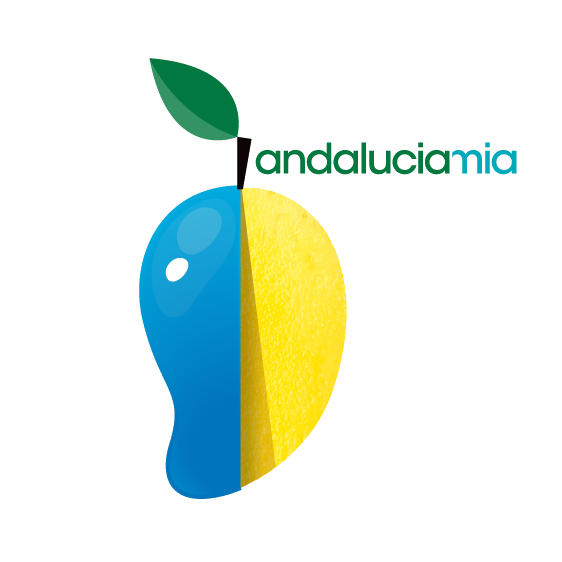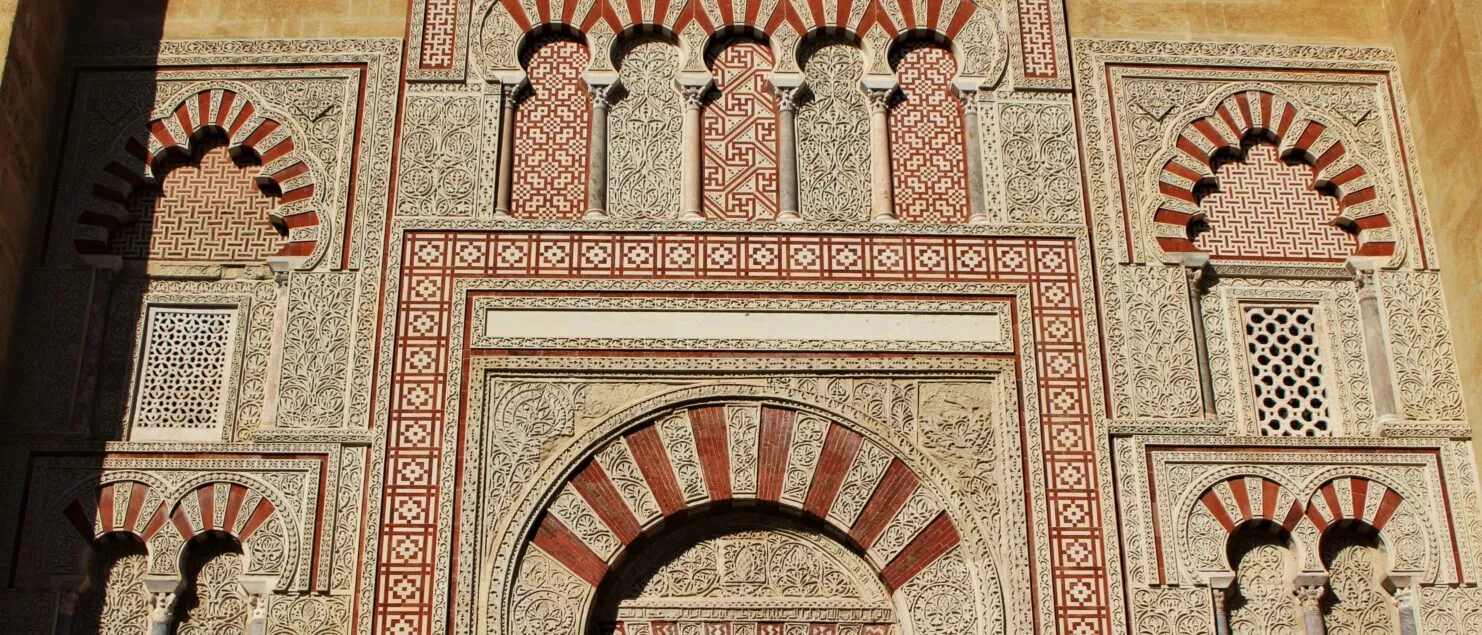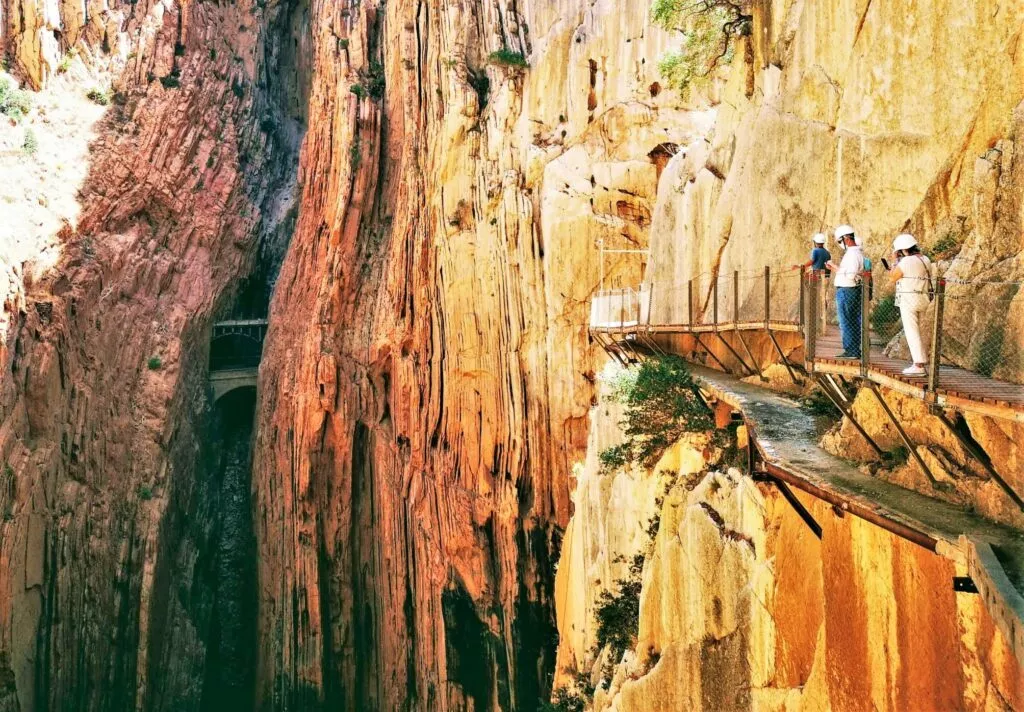What to see in Cordoba in 2 days – the best places to discover
Discover 23 must-see places in Cordoba Spain
In this article you will find all the information you need to know what to see in Cordoba in 2 days :
- A quick summary of the history of Cordoba
- Unesco heritage sites
- Locating Cordoba in Andalucia
- What to see in Cordoba in 2 days or more ?
- What to do in Cordoba ?
- Where to find accommodation
- Some useful links (car hire, other ideas for visits)
- Ideas for museums in Cordoba
- Discover al-Zahrawi
A brief history of Cordoba to get the most out of your visit
Cordoba was an important city in the Roman Empire 2200 years ago. The Romans founded the city of Corduba. The main legacy of this era is the Roman bridge that you can use to enter Cordoba and the columns of the old Roman temple.

When the Roman Empire fell, it came under the domination of the Visigoths. The latter built a basilica which was destroyed when the famous mezquita, now a cathedral, was built.
However, Cordoba owes its exceptional heritage to the period from 712 to 1236.
During this period, Cordoba (which was then called Qurtuba) was the political, intellectual, cultural and economic centre of Al-Andalus.
More precisely, it was the capital of the emirate from 756 and then of the caliphate of Al-Andalus in 929 (Cordoba was no longer dependent on the caliph of Baghdad).
In its heyday (10th century), it was the richest and largest city in Europe with 250,000 inhabitants. Its wealth rivalled that of Baghdad.
At that time, all of Europe was impressed by its 900 public baths and its 70 libraries!
The great library of Cordoba had 400,000 books under Al-Hakam II (961-976). He purchased and collected numerous manuscripts on science, medicine and Greek and Roman philosophy.

For the record, this caliph created the University of Cordoba within the Mezquita. More than half of the Mezquita’s surface area was occupied by teaching centres.
In 1009, the fitna (religious and political discord) in the caliphate began. It would end up divided into numerous kingdoms/cities called taifas. Córdoba was eventually attached to the kingdom of Seville, and its decline began at the end of the 11th century. The Catholic kings took over the city of Cordoba in 1236. A large part of the population moved to Granada, which remained independent until 1492.
Where is Cordoba in Andalucia?
Córdoba is located in the centre of Andalusia, at the foot of the Sierra Morena. It is crossed by the largest river in southern Spain, the Guadalquivir (whose name comes from Al-Wâdî Al-Kabîr).
Unesco World Heritage Sites to visit in Cordoba
Four sites in the city are listed:
- The Jewish quarter, the Juderia, also known as the historic centre of Cordoba (1994)
- The mosque-cathedral, the mezquita (1984)
- Medina-Azahara site, 8km from the city centre (2018)
- The Patio Festival of Cordoba (listed as an intangible heritage of humanity since 2012)
What to see in Cordoba in 2 days ?
- The Mezquita-Cathedral
- Alcazar de los Reyes Cristianos
- The San Basilio district
- The patios of Cordoba
- The Caliphal Baths in Córdoba
- The Arab baths of Santa María
- The royal stables of Córdoba
- The Roman Bridge
- La Calahorra Tower
- The Roman Temple
- Plaza de la Corredera
- Palace of Viana
- Plaza del Potro (Foal Square)
- Posada del Potro
- The Albolafia Mill
- The scarf alley (Calleja del Pañuelo)
- Visit the Juderia, the Jewish quarter
- Medina Azahara
- Five museums (at the bottom of the article)
The Mezquita-Cathedral a mut-see in Cordoba during these two days
Here we are, I believe, facing a monument unique in the world for its splendour and its incredible history.
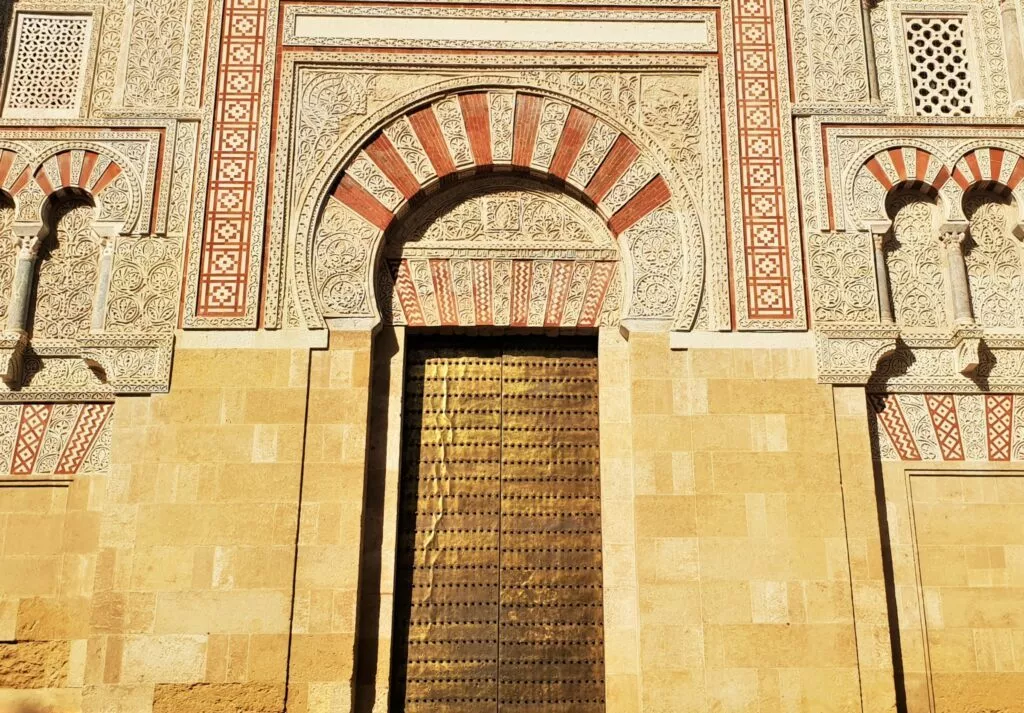
The Mezquita was built in 785 and completed in 987 on the site of a Visigoth basilica. Some of the remains from that period are still clearly visible.
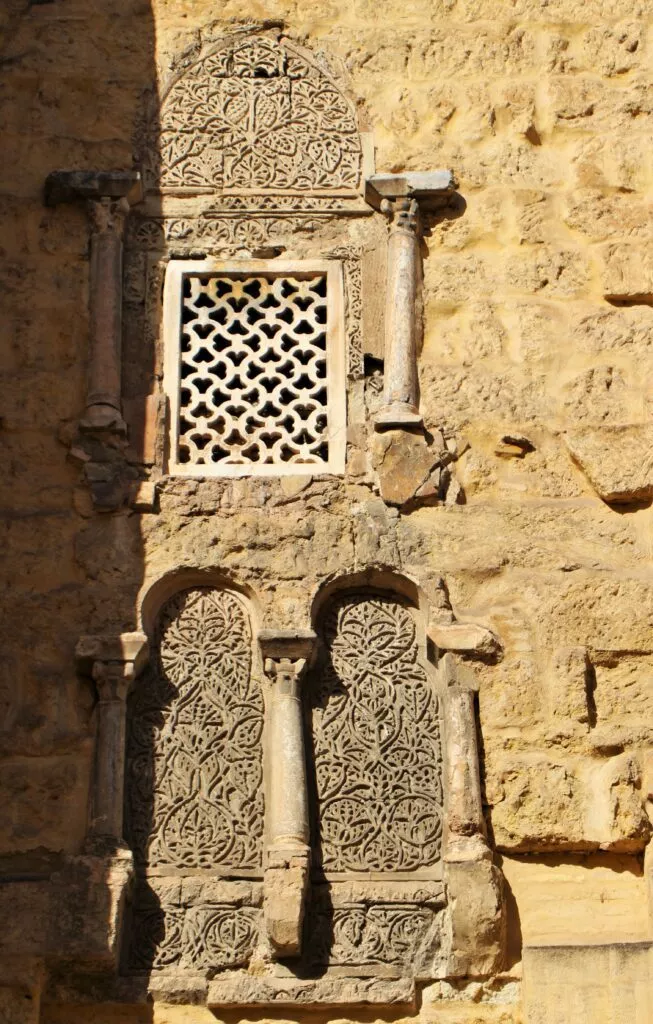
At the beginning, the basilica was shared between Christians and Muslims, who transformed part of it into a mosque. Then, with the evolution of the population, the whole basilica was transformed into the main mosque of the city, the mezquita Aljama.
The mezquita was extended three times until it had a surface area of 23,000 m².
For a long time it was the largest mosque in the world after Mecca.
It is recognised as one of the most beautiful legacies of Islamic art in Spain, as in the whole of the West. A visit to it is enough to reach the same conclusion.
After 1236, and the conquest of Cordoba, the Christians erected a cathedral in the Mezquita, making it today an incredible mix of architecture. This is why it is called the mosque-cathedral.

Curiously, through a glass floor in the mezquita, you can see mosaics from the ancient Visigothic basilica of San Vicente!
Even older, before the basilica there was a Roman temple dedicated to the deities. Some Roman columns were reused for the basilica as well as for the mezquita.
The mosque-cathedral of Córdoba today bears the official name of Our Lady of the Assumption Cathedral. However, the name Mezquita de Córdoba is also commonly used.
A visit to this monument is a must on any trip to Cordoba. You will be amazed by its beauty and history. Whether it is through the “forest” of 850 columns in the mezquita :
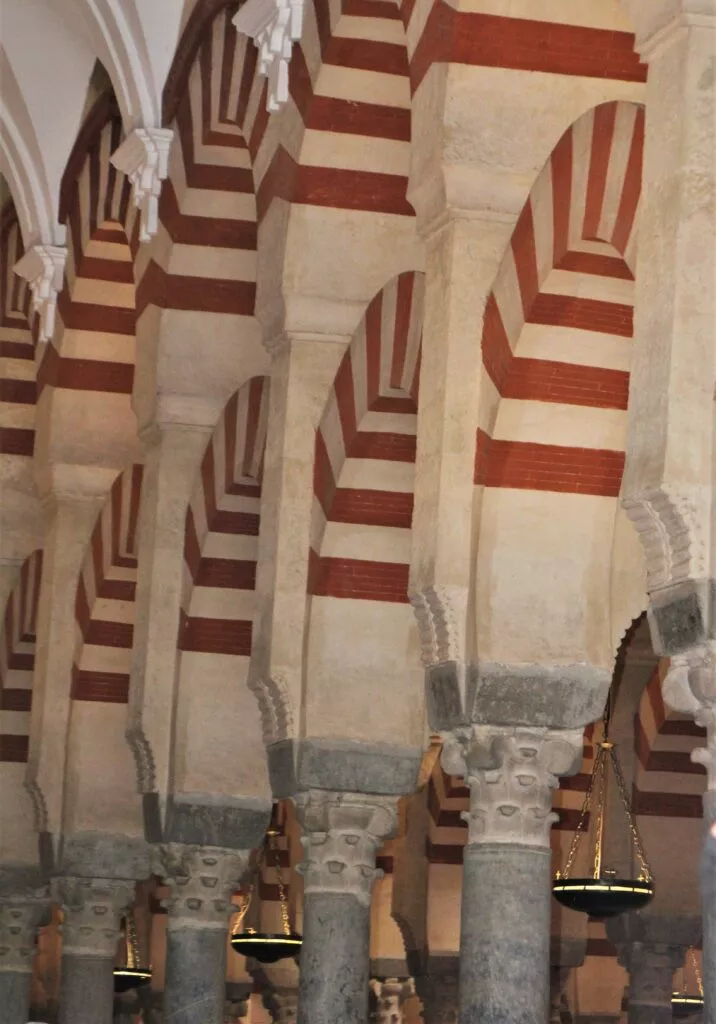
or from the patio de los naranjos, which is the old ablutions courtyard.
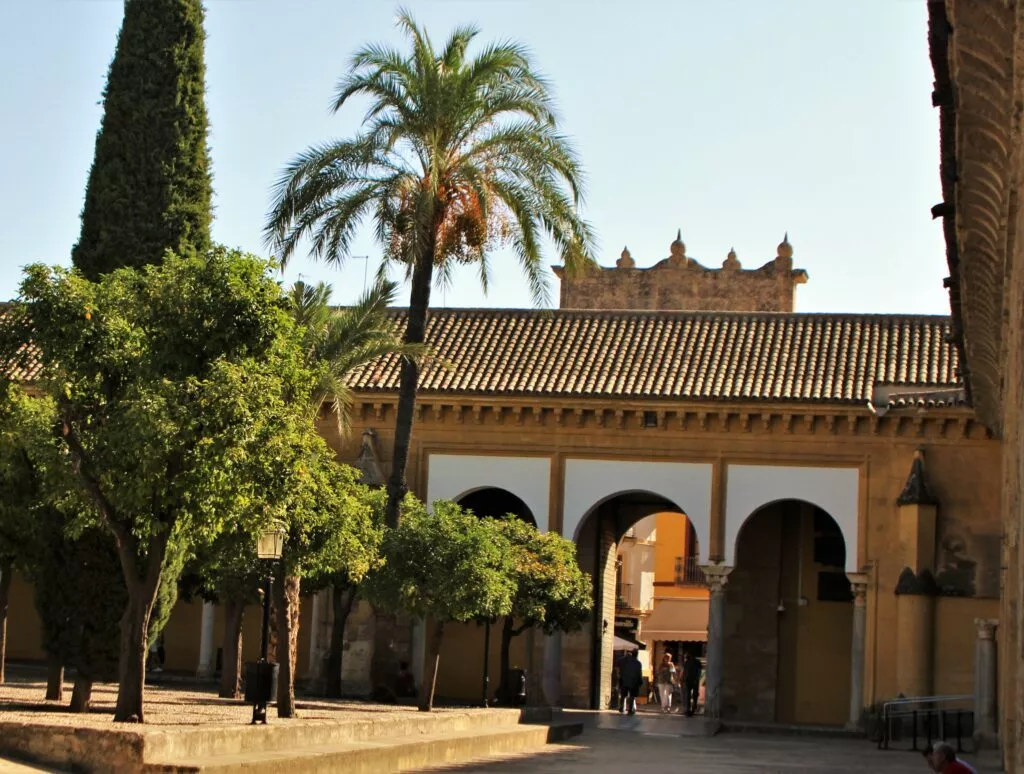
The “journey” begins as soon as you see the exterior façades and the arcades of the courtyard…
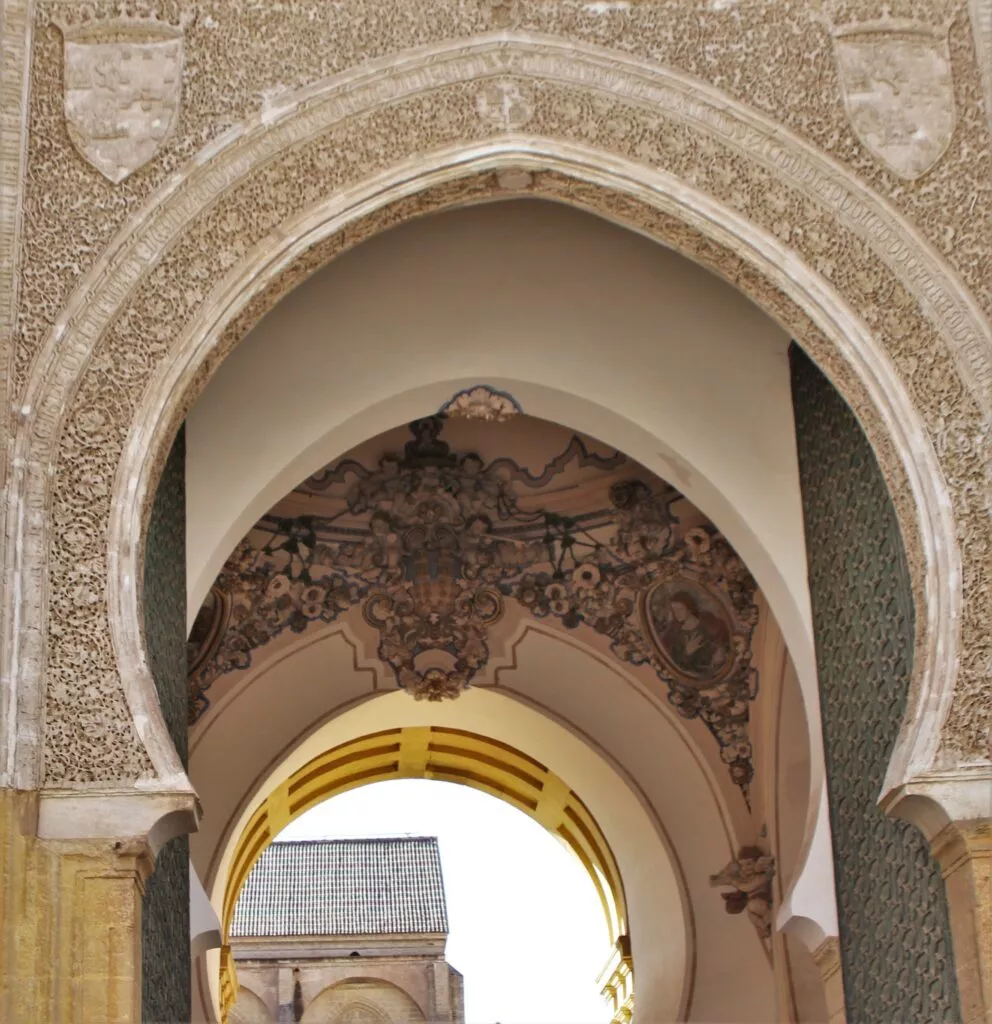
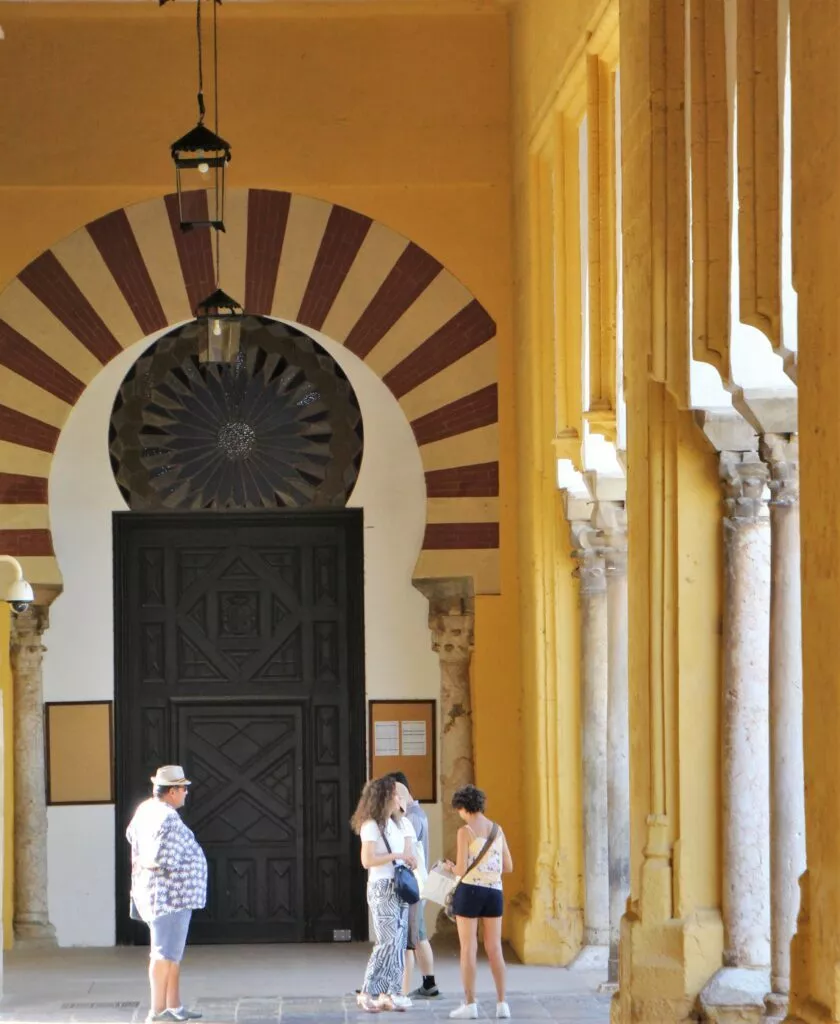
If you want to book a tour to this monument (and also avoid queuing to buy a ticket): you can book a tour to visit the mosque-cathedral here.
The Alcazar de los Reyes Cristianos
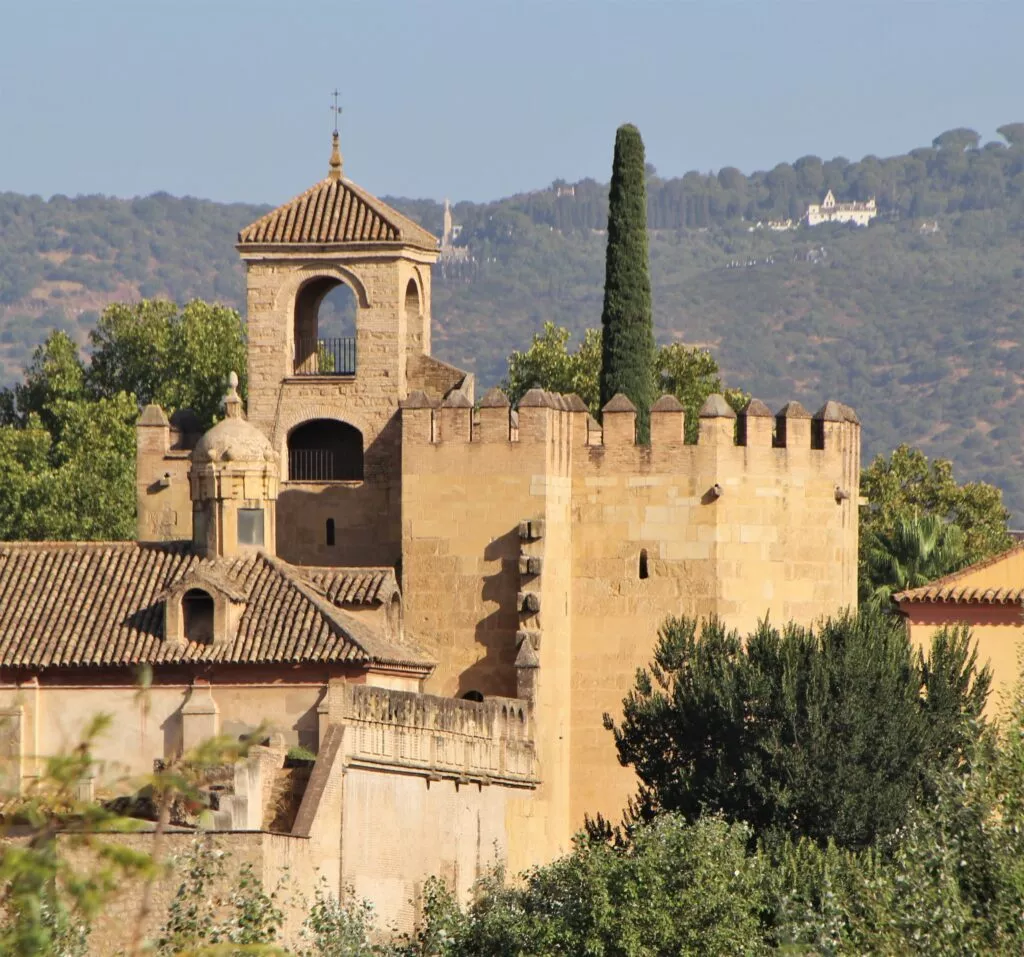
This is also a very important monument in the history of Cordoba.
In its origins, it was the residence of Roman governors and later of emirs and caliphs.
After the Reconquest it also retained a curiosity in its name: Alcazar de los reyes Cristianos….We should have read Castillo de los reyes catolicos! Despite its name, it was built almost a century after the reconquest, in 1328. The old Caliphal Palace was destroyed during the battles for the reconquest of Cordoba.
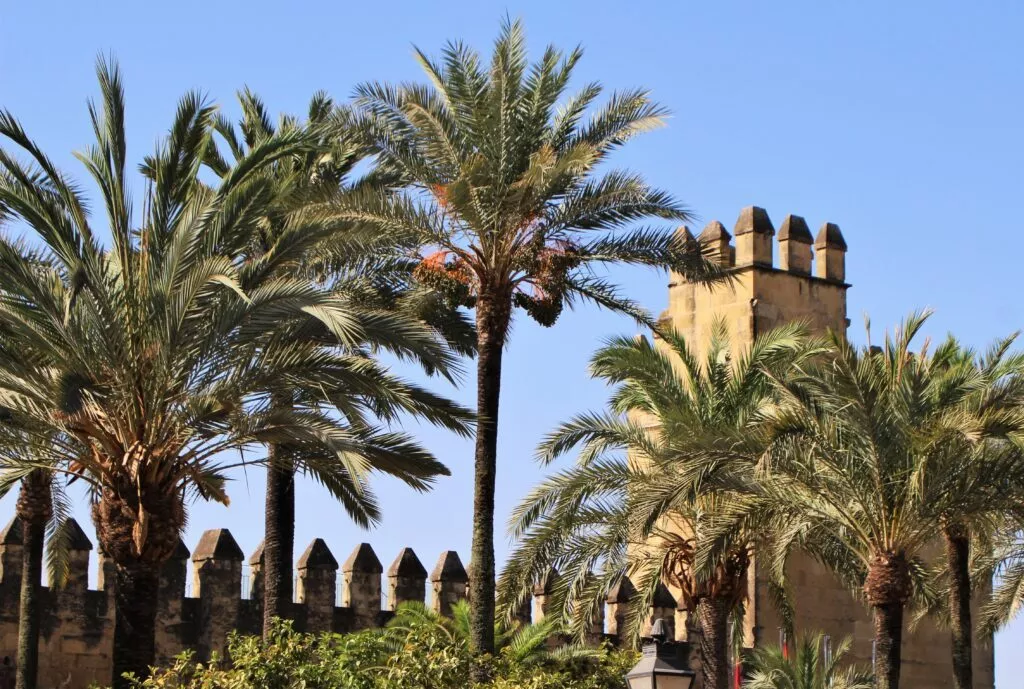
If you want to book a tour to this monument (and also avoid queuing to buy a ticket): you can book a tour to visit the Alcazar here.
This castle has subsequently had many “vocations”:
- Residence of the Catholic kings
- Place of negotiation between Christopher Columbus and Isabella of Castile to finance his voyage
- Seat of the Holy Office during the Inquisition
- Used as a garrison by Napoleon I for his troops
- Prison from 1821
NB: the explorer, Cristoforo Colombo, a native of Genoa, lived in Cordoba for several years, where he had a child, Diego Colombo.
The neighbourhood of San Basilio
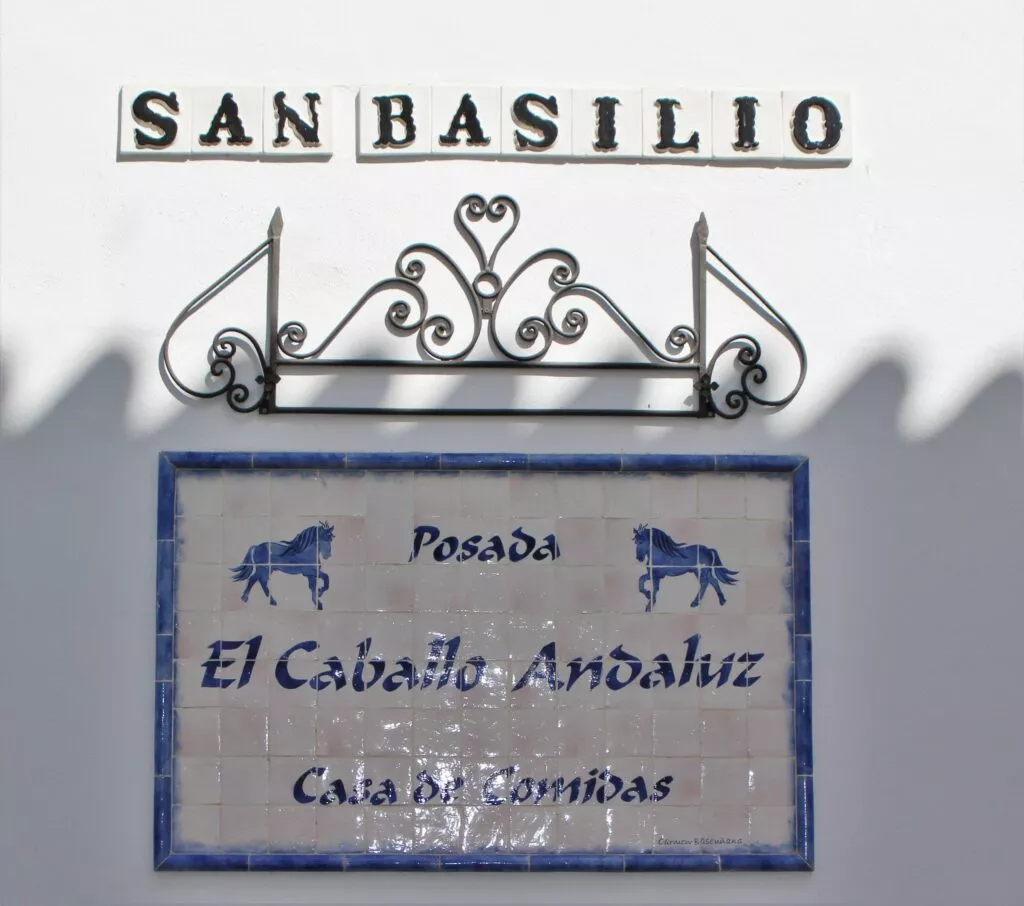
This historical neighbourhood, San Basilio, is known for 2 main reasons.
It was built beyond the city walls.
San Basilio neighbourhood is also located next to the Alcázar de los Reyes Cristianos. It is accessed through an archway near the royal stables.
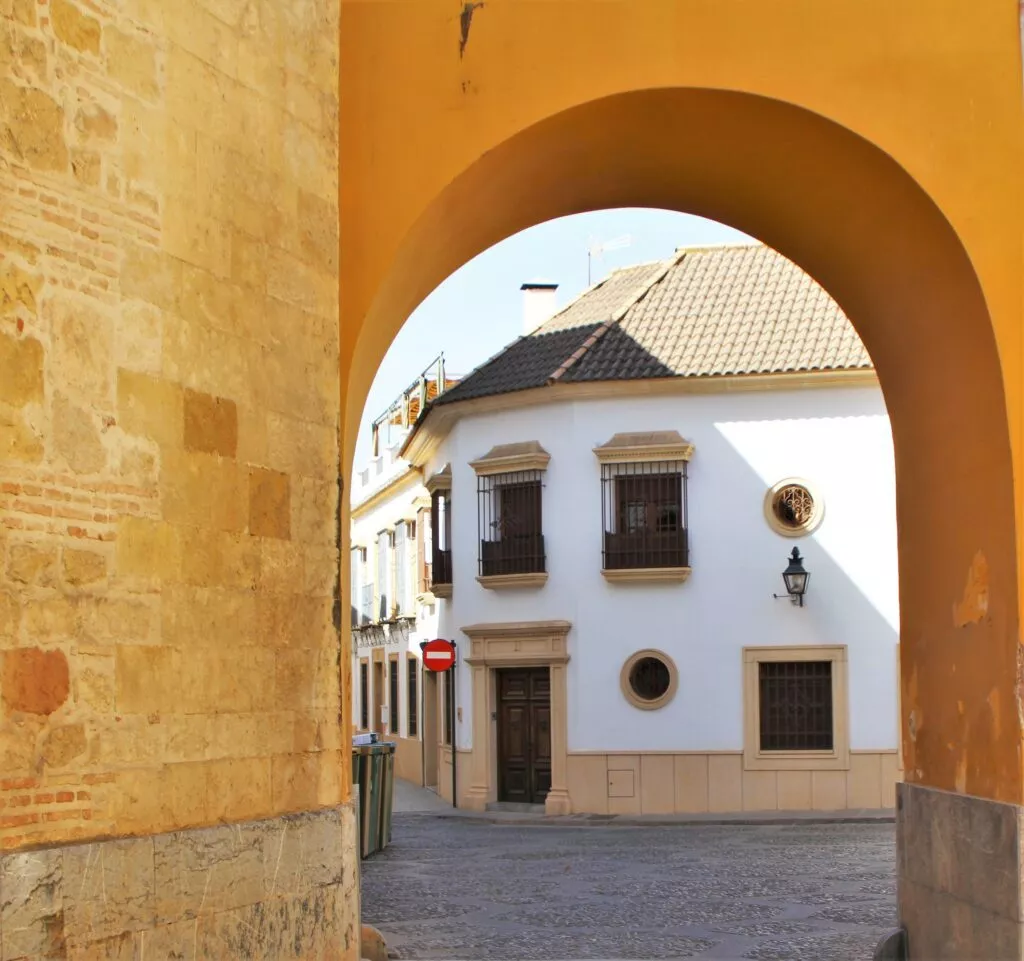
But it is best known for the 12 days at the beginning of May that celebrate the Fiesta of the Patios. This festival was declared a UNESCO World Heritage Site in 2012. This is the most famous area to see patios.
The patios – courtyards -, a treasure to see in Cordoba
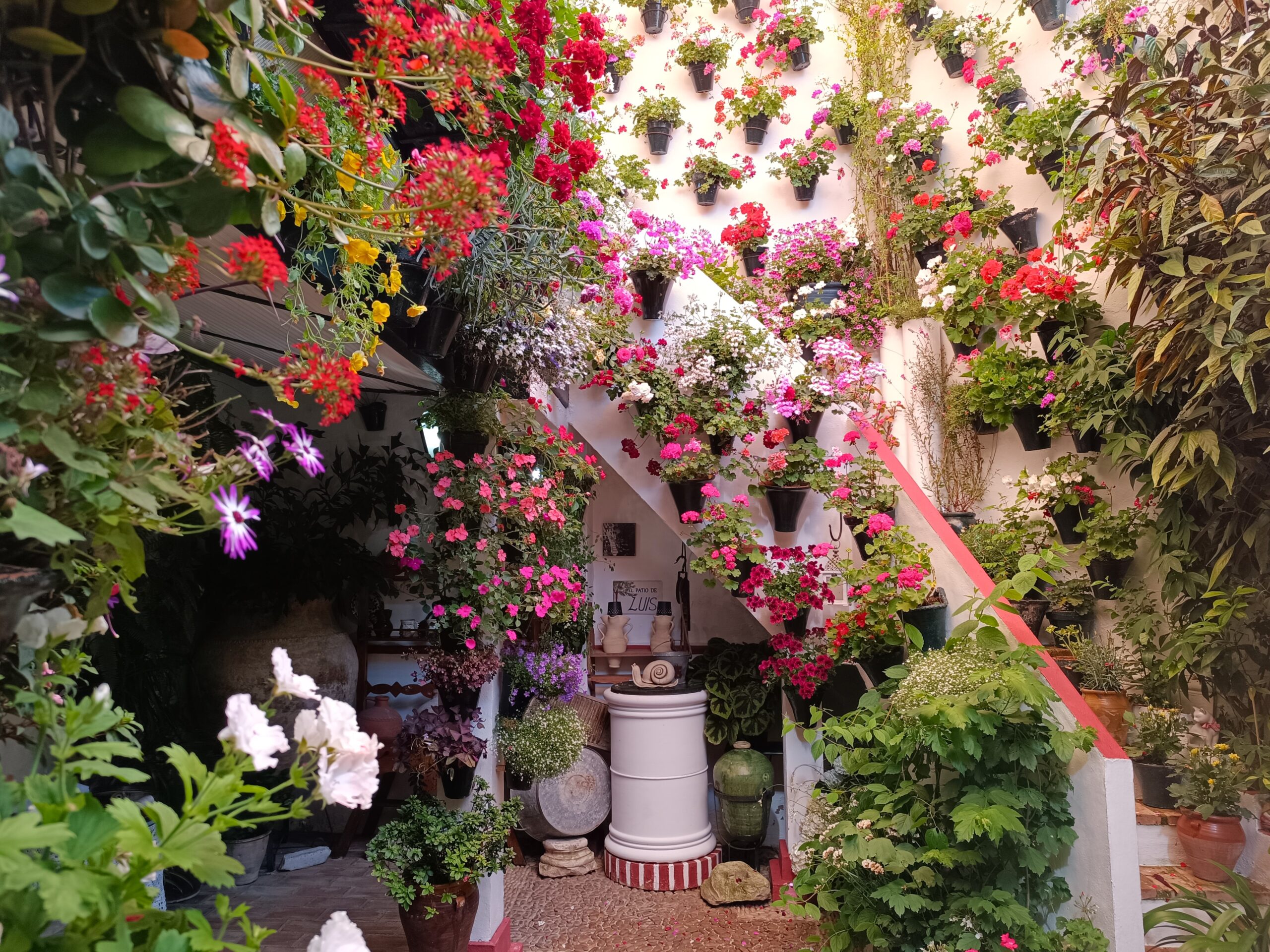
They are very famous and known worldwide with the countless flowerpots that decorate the interior walls. This culture was inherited from the Romans (flowerpots and double patios) and from the Arabs (a single patio).
Houses with patios were originally collective dwellings where one or more families lived.
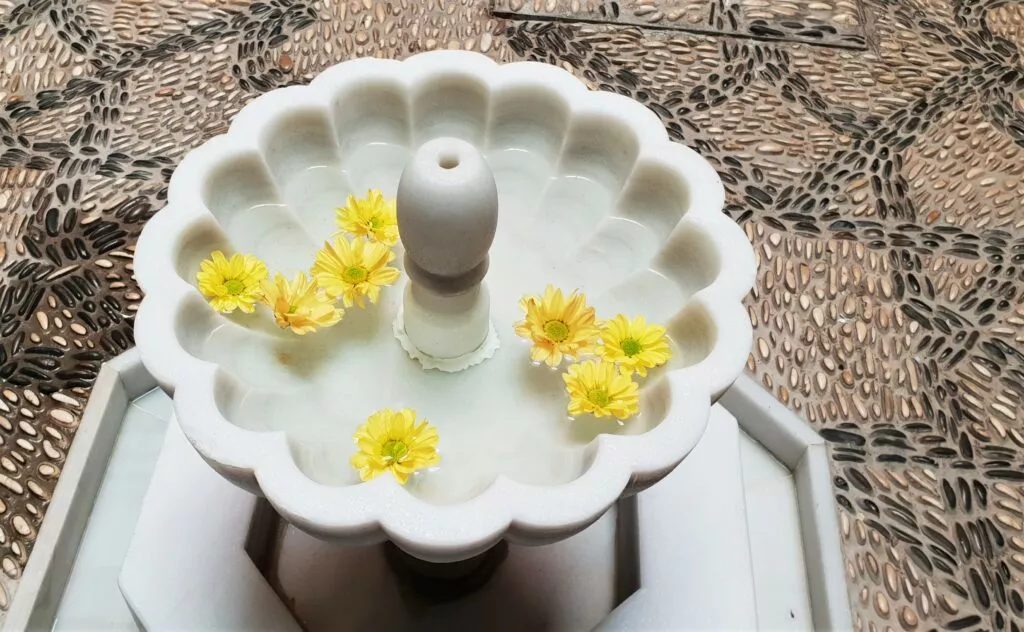
These decorations that adorn the walls with flowers have a surprising origin.
Initially, these decorations were intended to hide deteriorated walls, latrines or wells. Later on, they were used to show their social status to others, depending on the richness of the ornamentation.
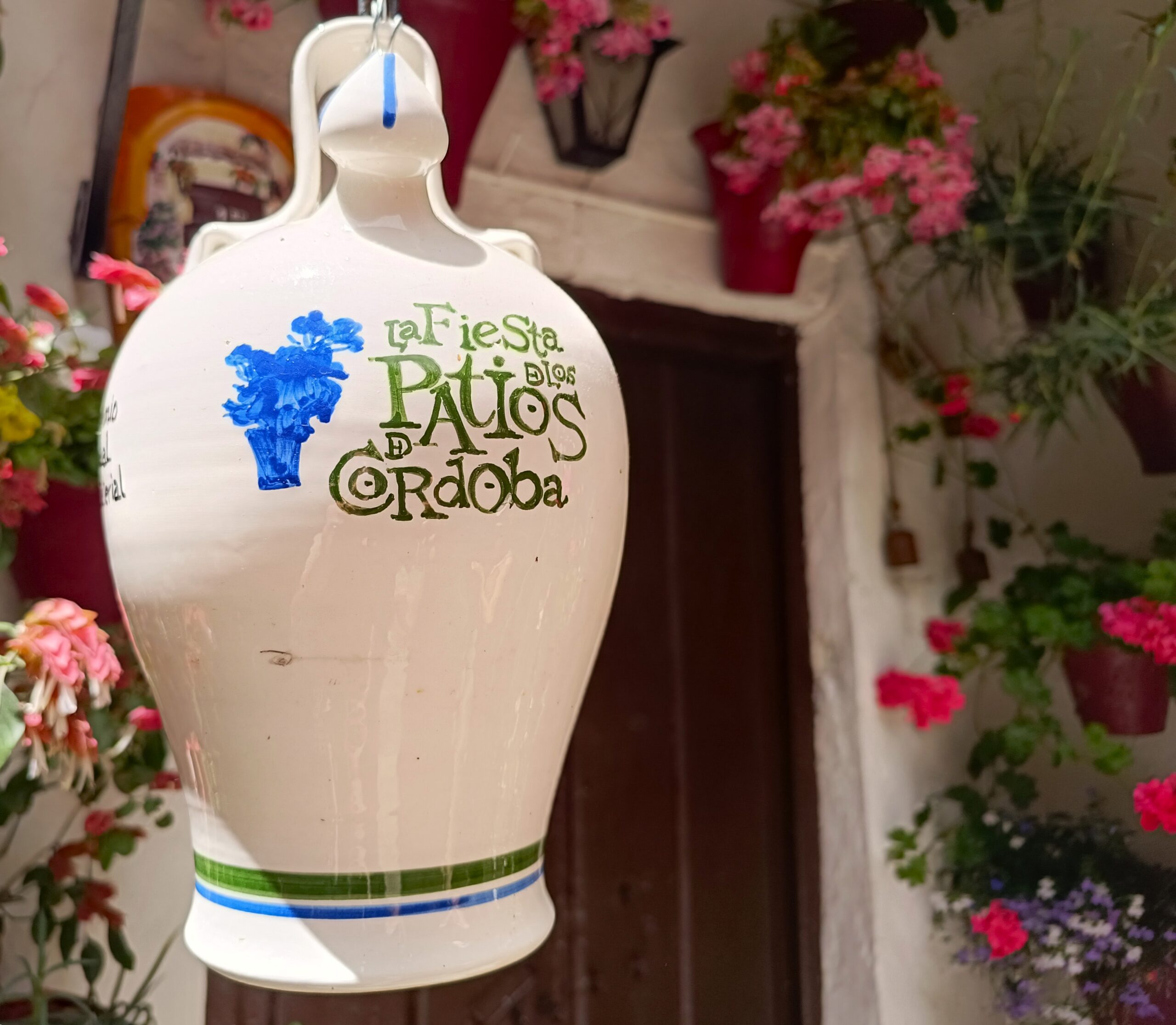
Every year these houses with patios take part in the Córdoba Patio Festival and competitions with prizes for the most beautiful patios. Many tourists choose to visit the city during this period.

During the Patio Festival there are also many festivities, including flamenco shows.
Walking around Córdoba, one comes across several statues that pay tribute to the patios in the city. In the San Basilio district, this is the sculpture below.

Visit the Caliphal Baths in Cordoba
These Arab baths are special in that they were reserved exclusively for the caliphs. They are located next to the Alcázar of the Christian Kings, which used to be the palace of the Caliphs.
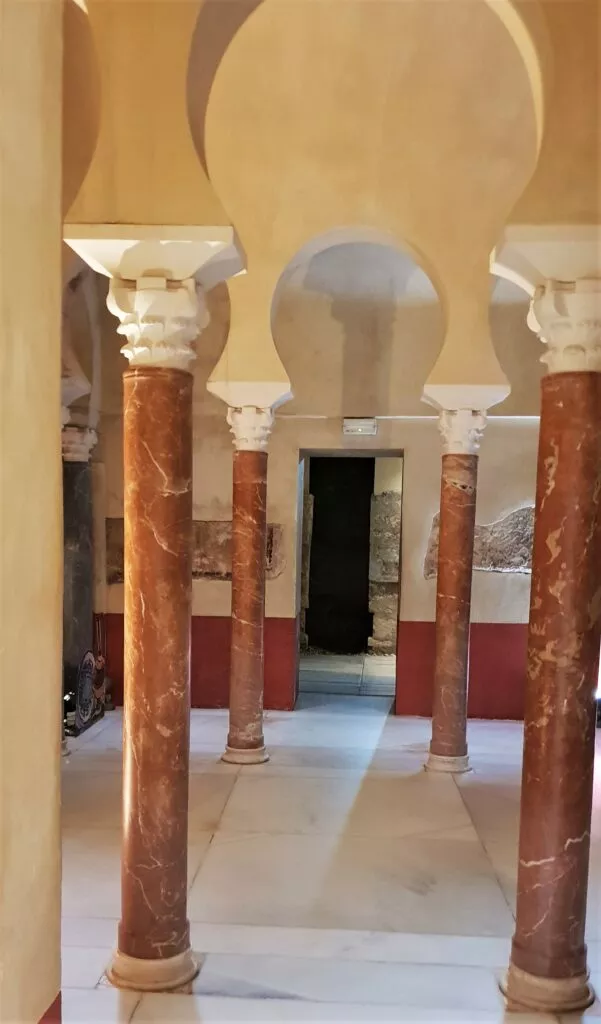
Below is a representation of the baths of the time when perfumes were scented in the patios and cosmetics were used based on aromatic oil and powder.
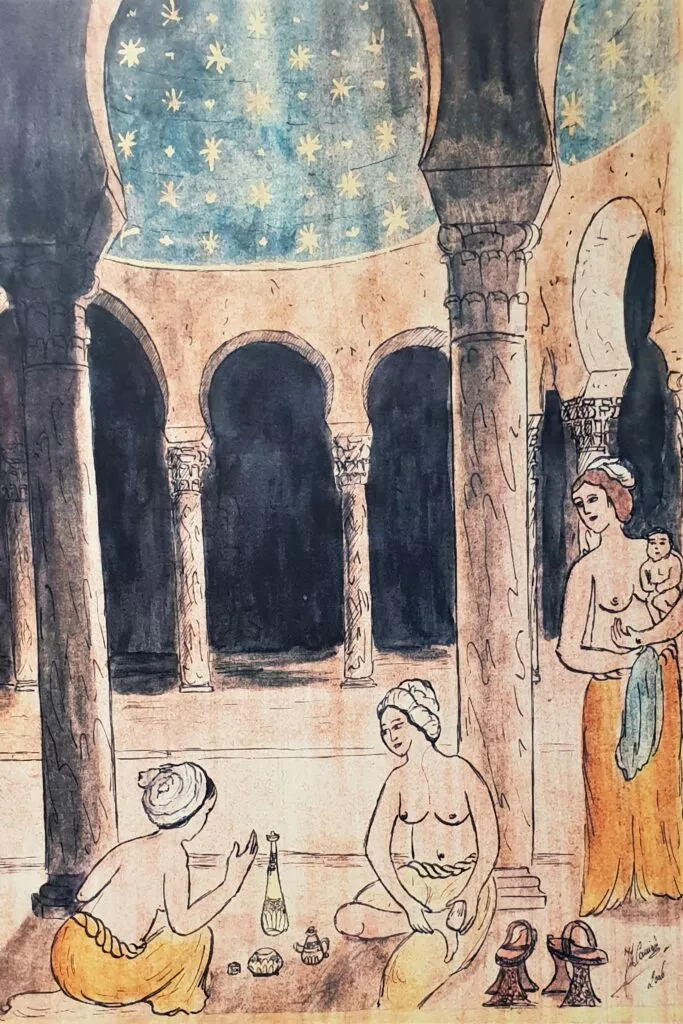
You can visit these caliphal baths. The entrance fee is 3 euros and allows you to see the 9 rooms that make up the baths (hammams and patios).
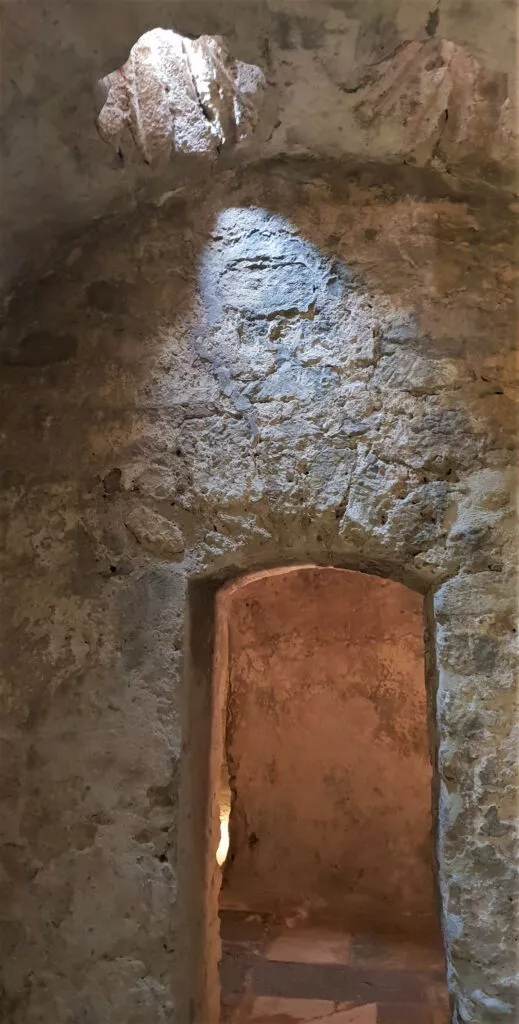
They were discovered at the beginning of the 20th century. But it was not until the early 1960s that historians were able to showcase this site, which had remained buried until then.
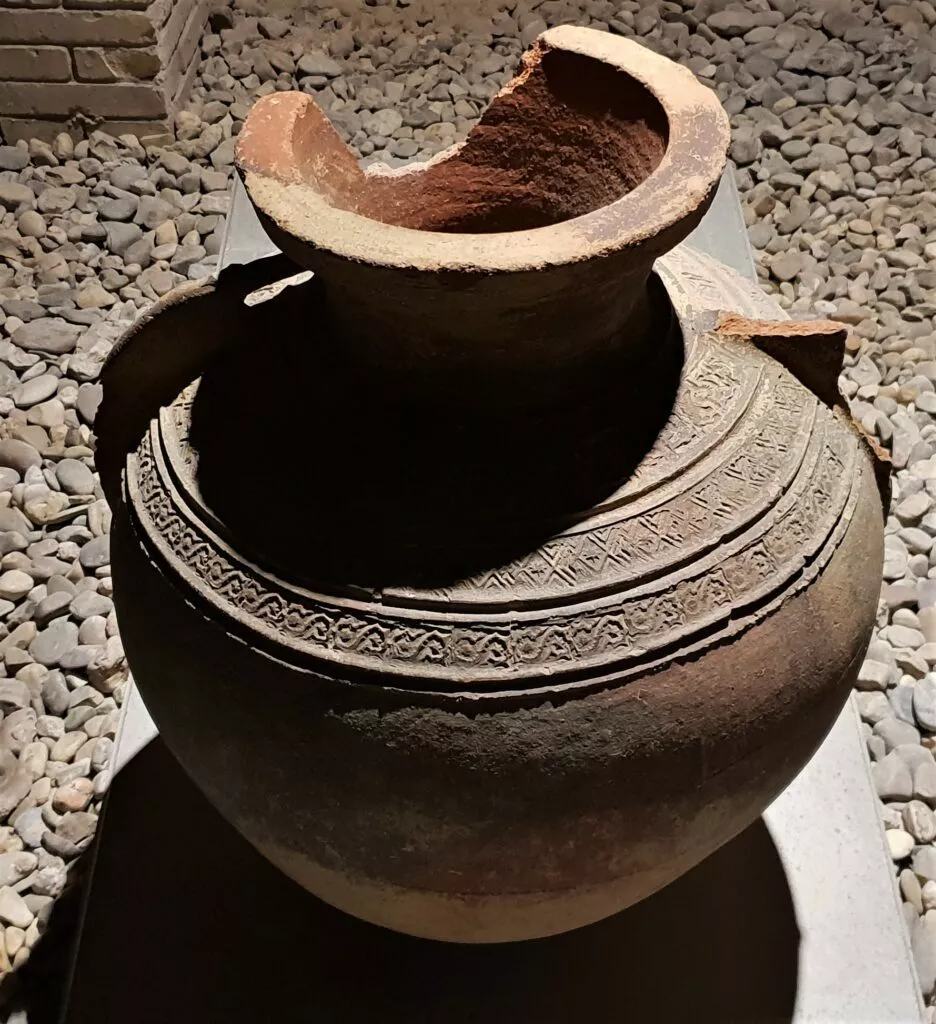
The Arab Baths of Santa María
These Arab baths can be visited and are located next to the Mezquita-Cathedral, in Calle Velasquez Bosco.
They were built after the Reconquest and are in the Mudejar style. However, it seems that they were built on top of hammans that already existed during al-Andalus.
On site, you can stop for a drink in a patio to enjoy the setting.
You will find in this link an article (in Spanish) about the history of the Moorish baths of Santa Maria.
The Royal Stables of Cordoba
Córdoba and horses: a very old love story.
Under the Roman Empire, as well as under al-Andalus, there are writings about the quality of the horses of Cordoba.
For example, we know that during the reign of Al-Hakam II, the stables of Cordoba were immense, with 2000 horses.
However, the “Royal Stables of Cordoba” were founded in 1570 by Felipe II. It was in these stables that the famous Andalusian horse breed, the PRE (Pura Raza Española) was “born”.
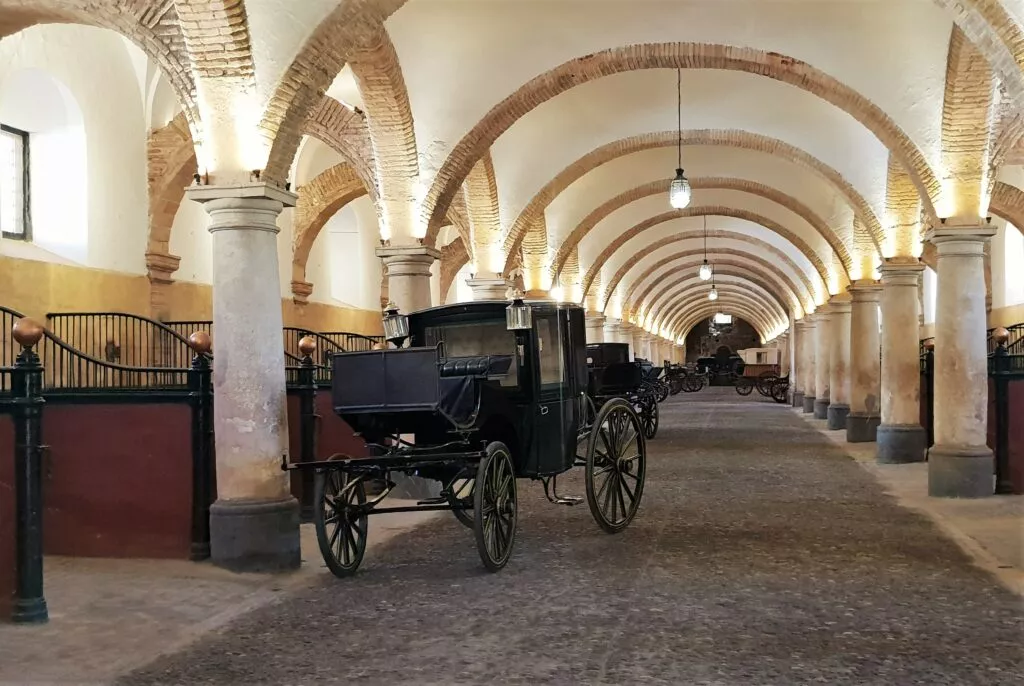
Notes: It is possible to book for the equestrian show in the courtyard of the royal stables 4 days a week (approx. 15-20€).
The Roman Bridge
The Roman bridge of Cordoba, which crosses the Guadalquivir, is a “must” in the city.
Curiously, it was the only bridge in the city for almost 2000 years. In fact, it was built at the end of the 1st century BC; and the second bridge, the San Rafael Bridge, was only built in 1953!
According to the latest research by historians, this bridge is located on the Roman via Augusta. The Roman road that joined Rome to Cadiz!
At one end of the bridge is the famous Calahorra Tower, and on the other side you find yourself right next to the Mezquita.

The view of Córdoba and the bridge from the Calahorra tower is amazing.
Calahorra Tower

The Calahorra Tower (from Qal’a horra, “free fortress”) is a small fortress built under Al-Andalus. It was built during the Almohad dynasty, at the entrance to the Roman bridge that leads to the city centre.
This tower was later modified to maintain its defensive role.
The Roman Temple of Cordoba
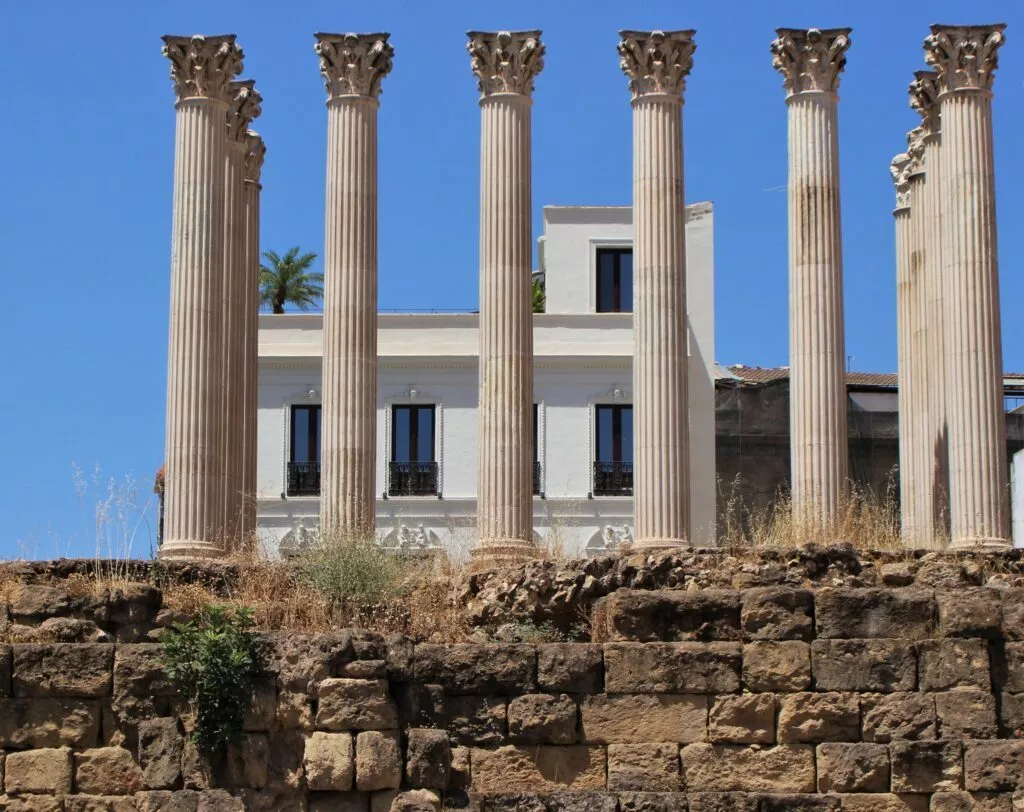
Remains of this Roman temple can be found next to the town hall.
The view of the Roman columns is quite impressive. This temple is worth a visit.
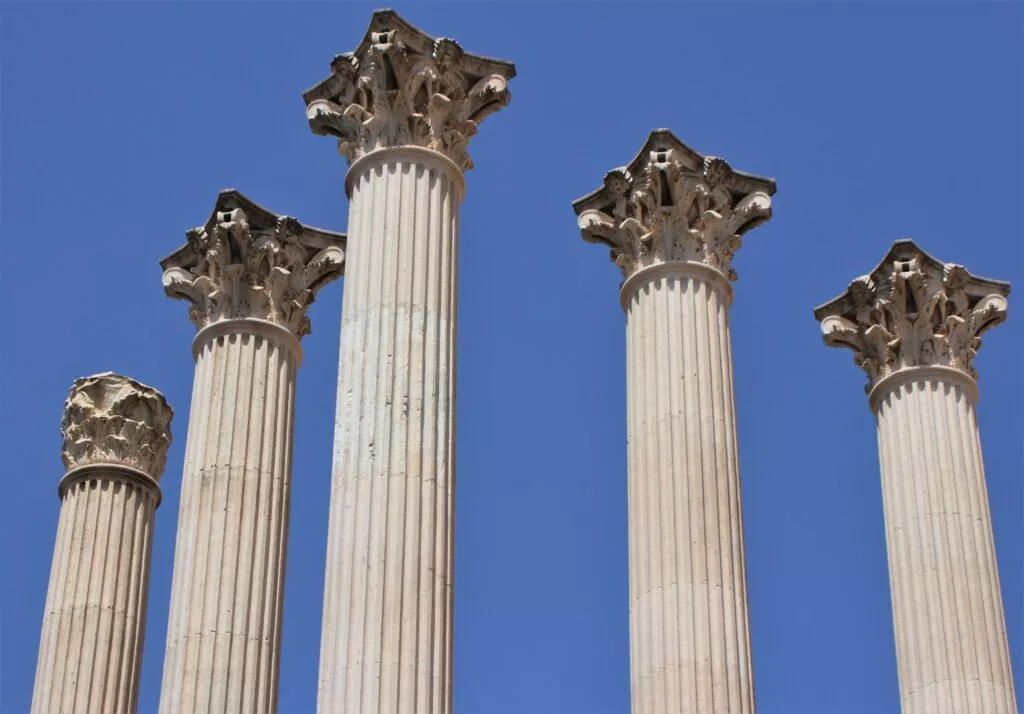
The Plaza de la Corredera
The plaza de la Corredera is the most famous square in Cordoba.
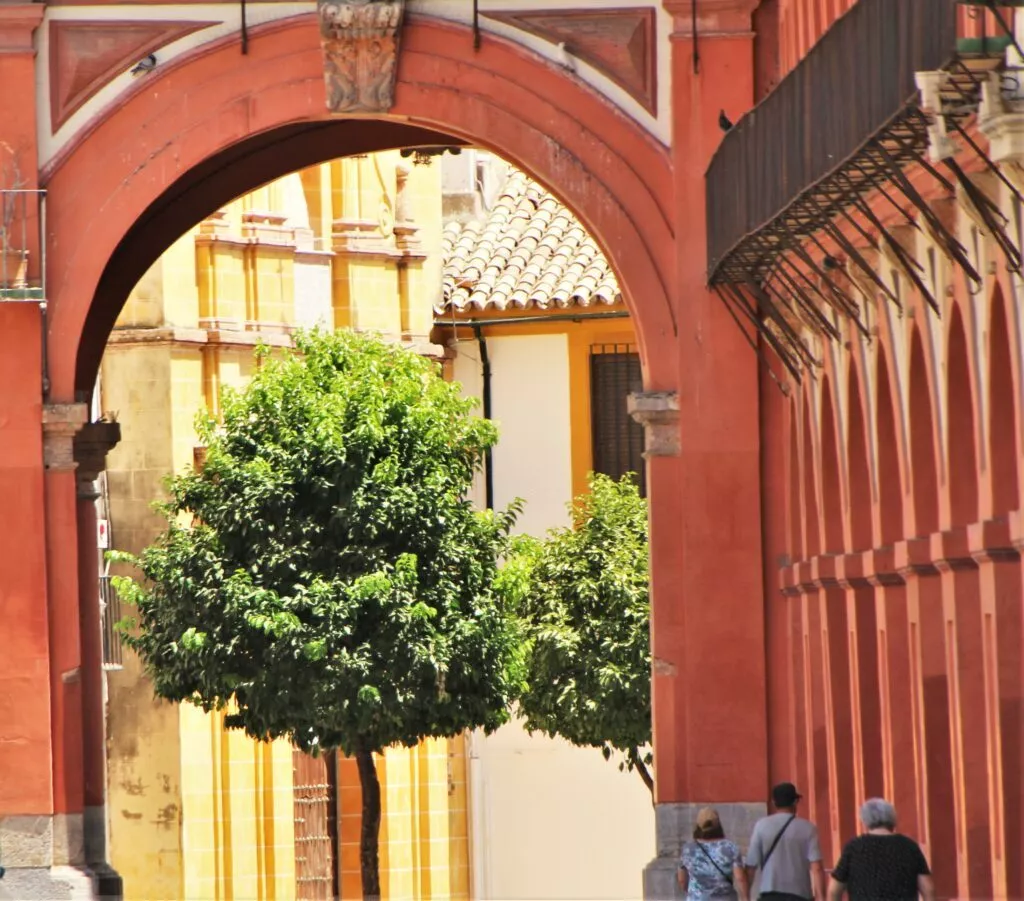
It dates from the 17th century and is unique in Andalusia. It is the only example of a rectangular square with arcades in Andalusia. This architecture is much more common in Castilla.
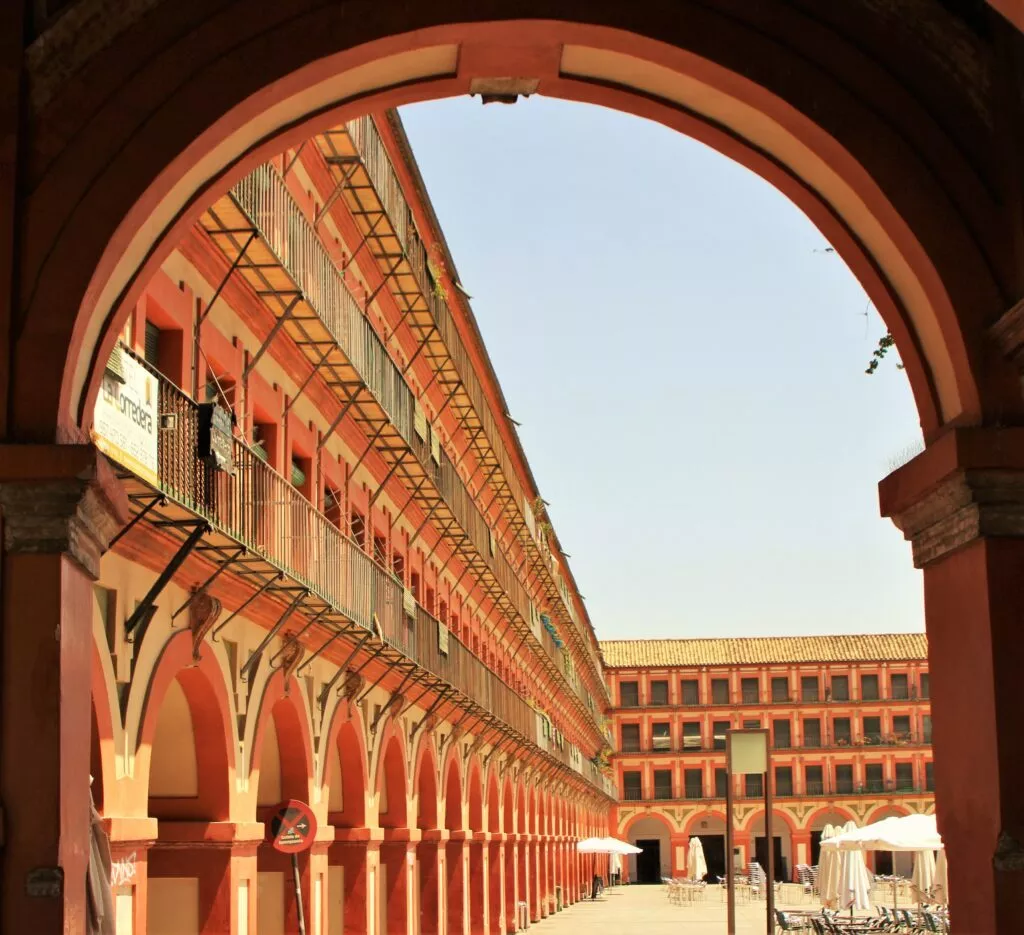
This beautiful square has a very curious history:
- a meeting place for the people
- festival square
- market place
- bullring for bullfights
- place of execution of prisoners and auto-da-fé during the Napoleonic occupation.
Palace of Viana a wonder to see in Cordoba
This palace, which is open to the public, is a beautiful and peaceful place to visit. It is located in the Plaza de Don Gome.
During the visit to the palace, you will pass through 12 patios and a beautiful garden.
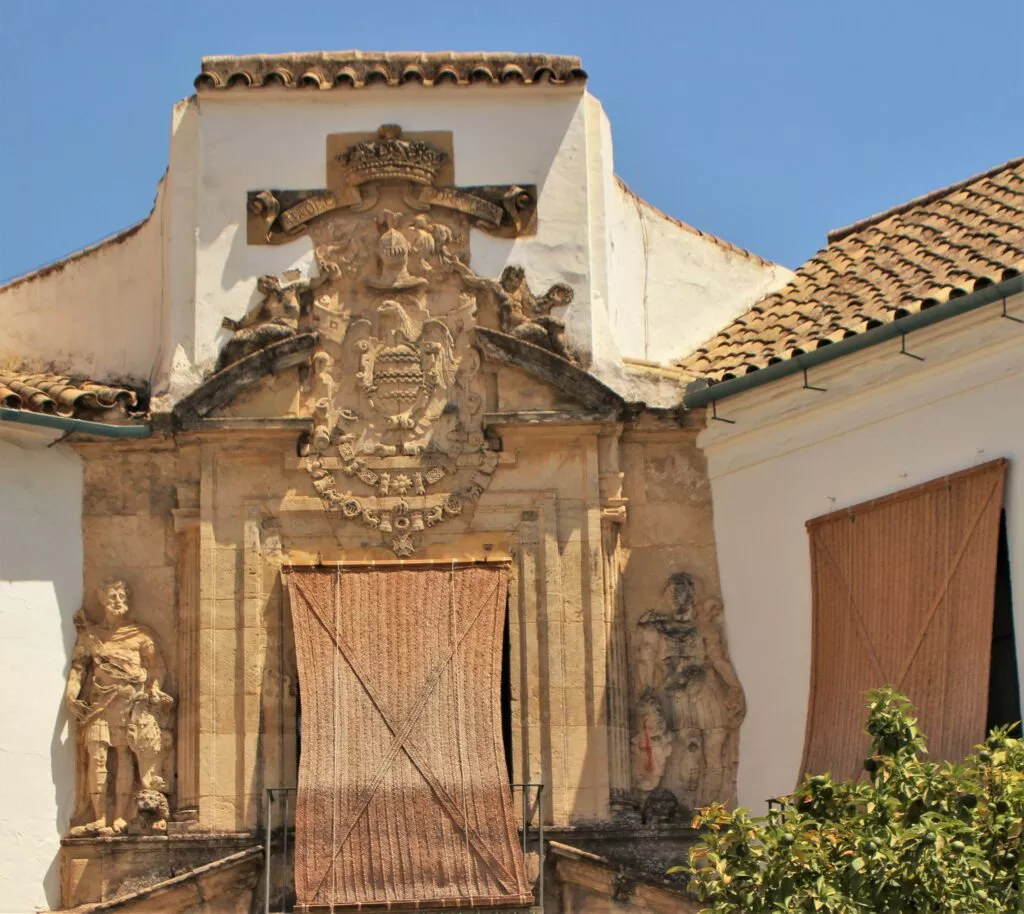
These patios have Roman and Arab influences.
In the palace, you can discover a collection of paintings and tapestries.
Before the palace was sold to CajaSur in 1980, it was owned by the Marquise of Viana, Sophie de Lancaster.
She was responsible for the preservation of this splendid 14th century palace in its original state.
Here is a link to book a visit to the palace of Viana (the ticket costs about 6€).
Plaza del Potro (Foal Square)
This square in the Christian quarter of the city (referring to the area where Christians lived in Al-Andalus) was a big coup de coeur.
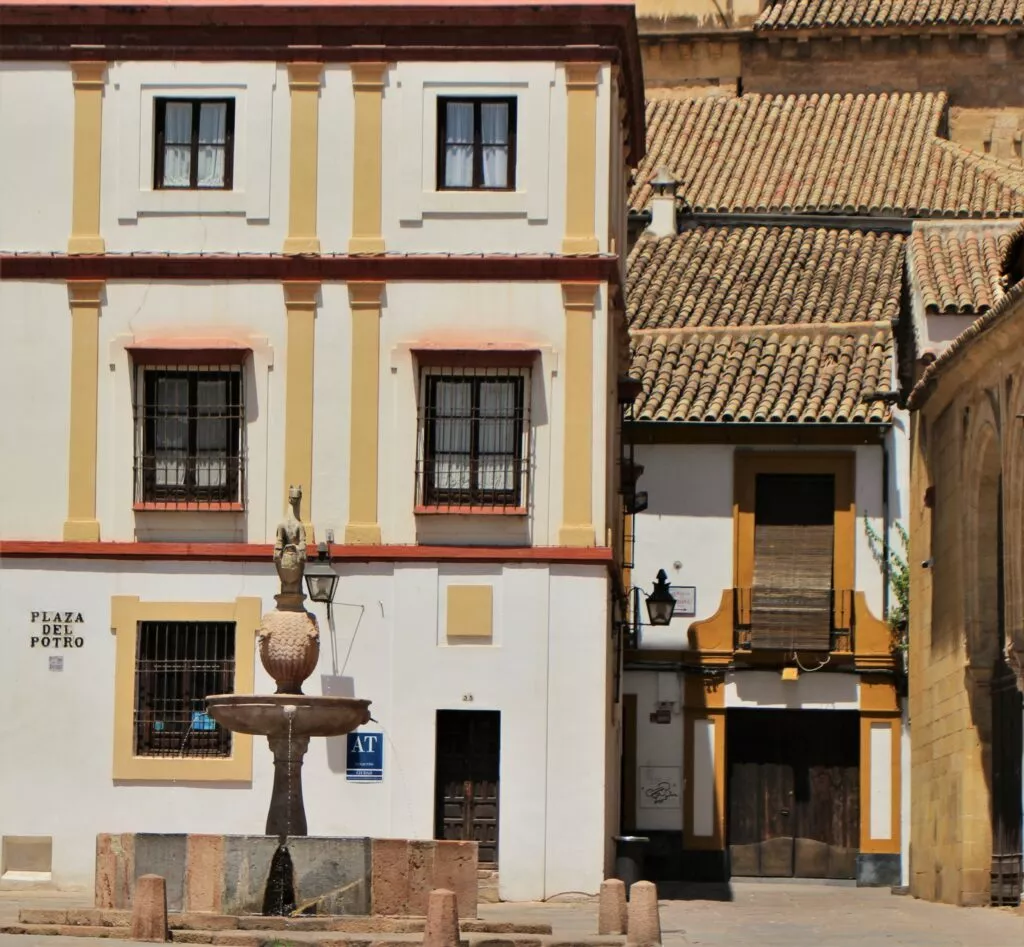
It is true that on the surface nothing extraordinary emerges from the square. However, this square and the buildings around it have an incredibly rich history. And I found a beautiful atmosphere in this place.
In the square, there is the former Charity Hospital, which now houses the Museum of Fine Arts and the Julio Romero de Torres Museum.
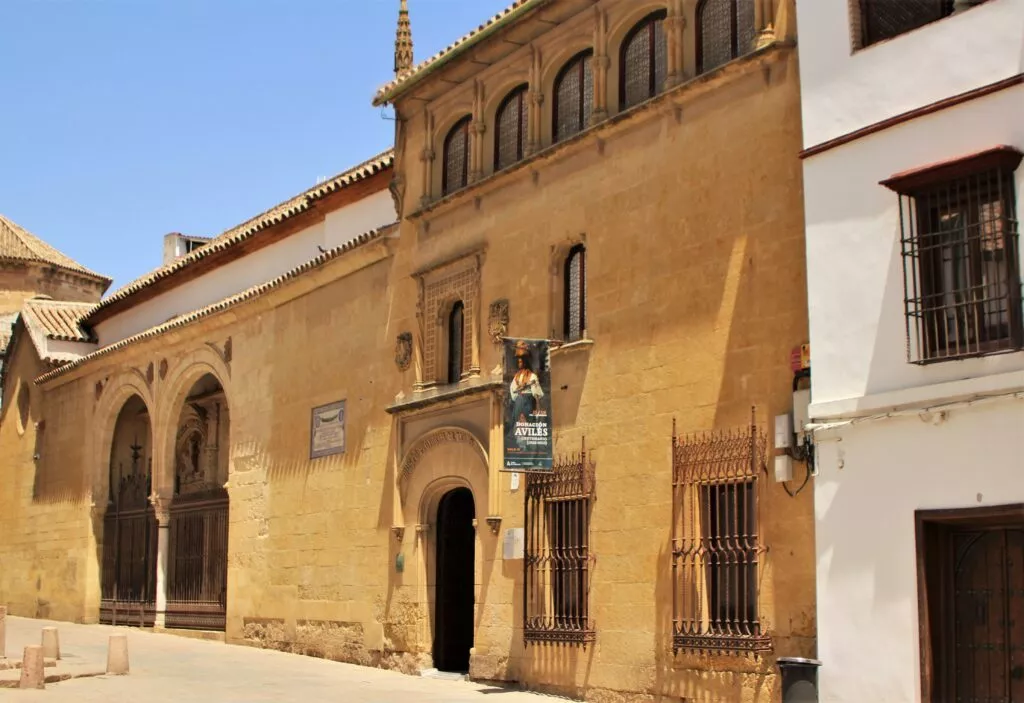
The Posada del Potro is also worth a visit!
Cervantes, the famous father of Dulcinea… :), made it one of his favourite places in Cordoba. He stayed in this posada and the place inspired the writer for some scenes of his works.
A posada is an inn that received travellers and merchants passing through. This one has the particularity of being built like the popular dwellings of the 15th century. Small dwellings that surround a courtyard with a well in its centre.
The posada is nowadays used as a flamenco centre. But, if you have the opportunity to go in to see the courtyard, do so!
Finally, the name of the square is ‘Plaza del Foal’ in reference to the sculpture of the fountain which is in the shape of an equine. It was also the main place for trading cattle!
The Albolafia Mill
It is located near the Roman bridge on the right bank and is worth a visit. This mill can be seen below (N°6) on the map of Cordoba in the Caliphate period.
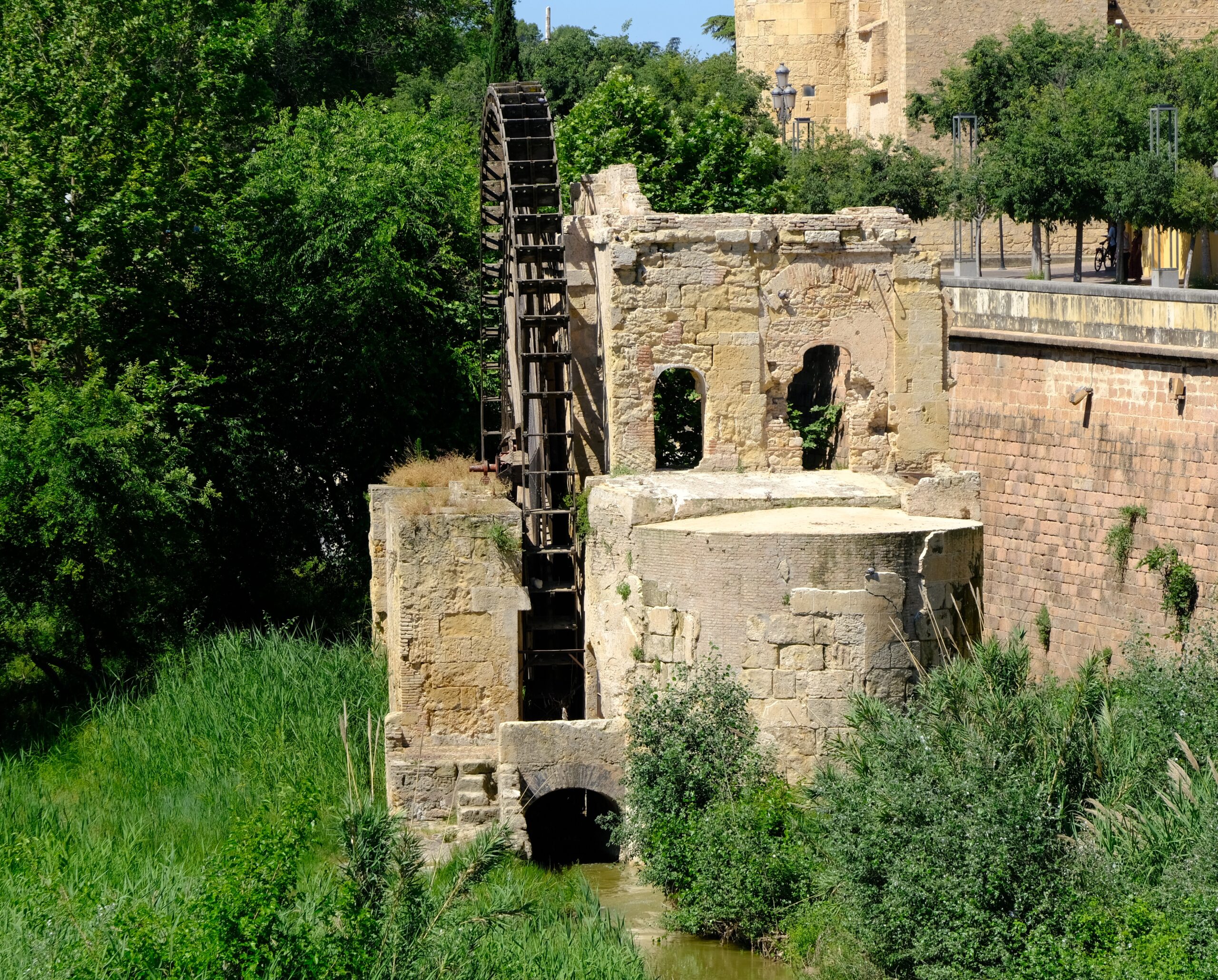
It was built in the 9th century to bring water from the Guadalquivir to the emirs’ palace through an aqueduct.
The noria (large wheel) that can be seen when approaching the mill, used to draw water from the river to feed the aqueduct, has been restored. However, when you are standing right next to it, this “postcard image” takes you back in time.

Below is a picture of another mill that can be seen from the Roman bridge. Walking along the river, one can count 11 mills, norias, most of them dating from the Al-Andalus period. These mills were used for irrigation, milling, and to supply water to the hammams, public baths and gardens.
The scarf alley (Calleja del Pañuelo)
When visiting Córdoba, here is an alleyway to discover!

Here is how to find this alley, and its history and legend:
La Calleja del Pañuelo can be taken from the Plaza de la Concha (quite close to the mezquita). Its official name is Calle Pedro Jimenez (like the vine).
But this Moorish-style alleyway has this nickname because it is said that its width is equal to the length of a scarf!

Another peculiarity of this alley is that we will find one of the smallest squares in the world: Plaza de los Rincones de Oro.
You should not go there too many times, it measures 15m²…
This one is decorated with a fountain of Arab origin and an orange tree. The best time to visit is in the spring when the wonderful scent of the azahar blossoms spreads over the square.

The name of this square comes from a legend: it is said that here an Arab trader sold the best silks of the entire caliphate, so beautiful that they were compared to gold.
Visit the Juderia, the Jewish quarter of Cordoba
This quarter is a small wonder with many treasures. You will probably cross the Jewish Quarter several times during your two-day visit to Cordoba.
It is surrounded by the old wall of the Medina, on Kerouan Street. The Jewish quarter is accessed from the Bad Al-Yawz gate, which today is called Puerta de Almodovar. It is the only one of the 9 entrance gates to the medina and the Jewish quarter that remains from that period.
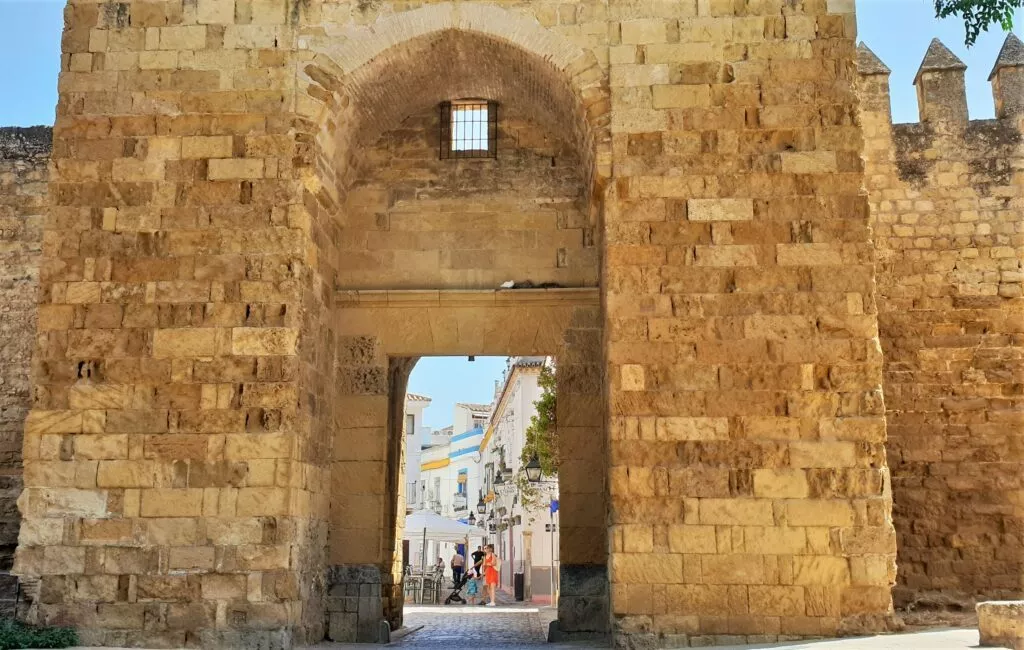
In the following link, you will find all that there is to see in the most authentic quarter of Cordoba.
You can visit the only remaining synagogue from the al-Andalus period in Andalucia. You can see it in the following link visit the Jewish quarter of Cordoba.
In Cordoba province, I invite you to discover Lucena, called the Sephardic Pearl. It is a very special place about Jewish in Spain during the Al-Andalus period.
What to do in Cordoba?
Below you will find a number of ideas for activities and visits, classified by theme. You can book them online today.
The +: the activities can all be cancelled up to 24 hours before the scheduled date
If you are in the western part of the Costa del Sol and would like to visit Cordoba, you can use the following link to book a tour from Málaga, Torremolinos, Mijas or Benalmadena.
Here’s an idea: go to the hammam, in the city centre, to relax at the end of the day.
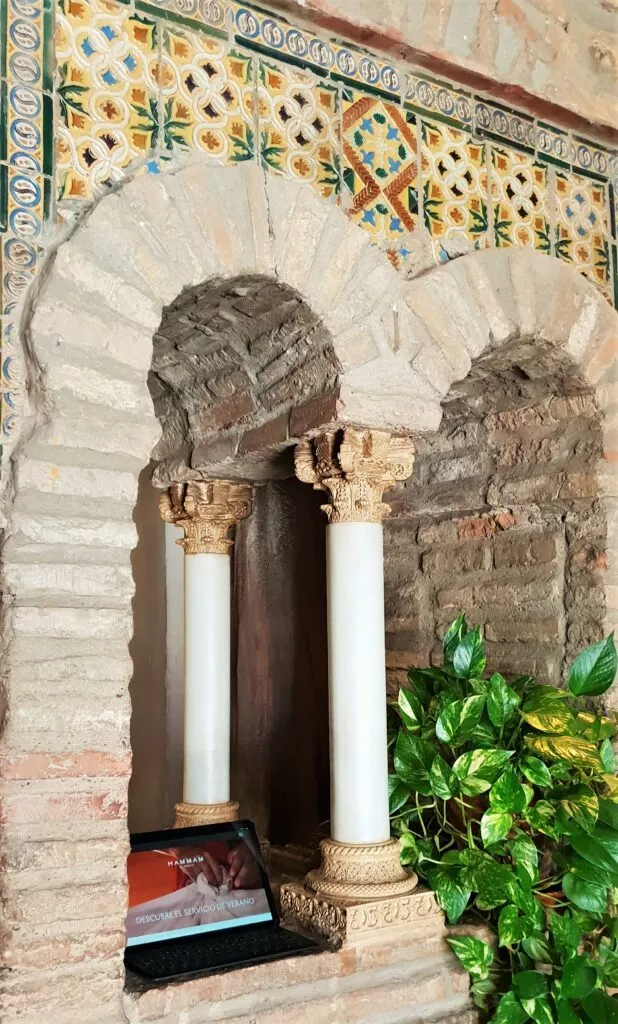
A wonderful moment of relaxation in sight!
Here you can find the link to book a ticket for the Al-Andalus hammam in Cordoba
In the event that you are on holiday on the “Costa del Sol Oriental”, the eastern part of Malaga:
From your place of stay between Nerja and Torre del Mar, a guide organises a day trip to discover Cordoba. This excursion is a semi-private tour (maximum 2 to 8 people).
To know the details of the tour, the price and to book online, simply click on : Califal Cordoba Tour.
Find accommodation in Cordoba
See the offers for a stay of one or more nights in the historic centre of Cordoba.
What to visit around Cordoba: Madinat al-Zahra (Medina Azahara)
Madinat al-Zahra is located 8km from Córdoba and was declared a UNESCO World Heritage Site in 2012.
It was built by the Umayyad caliph Abd-ar-Rahman III (912-961).
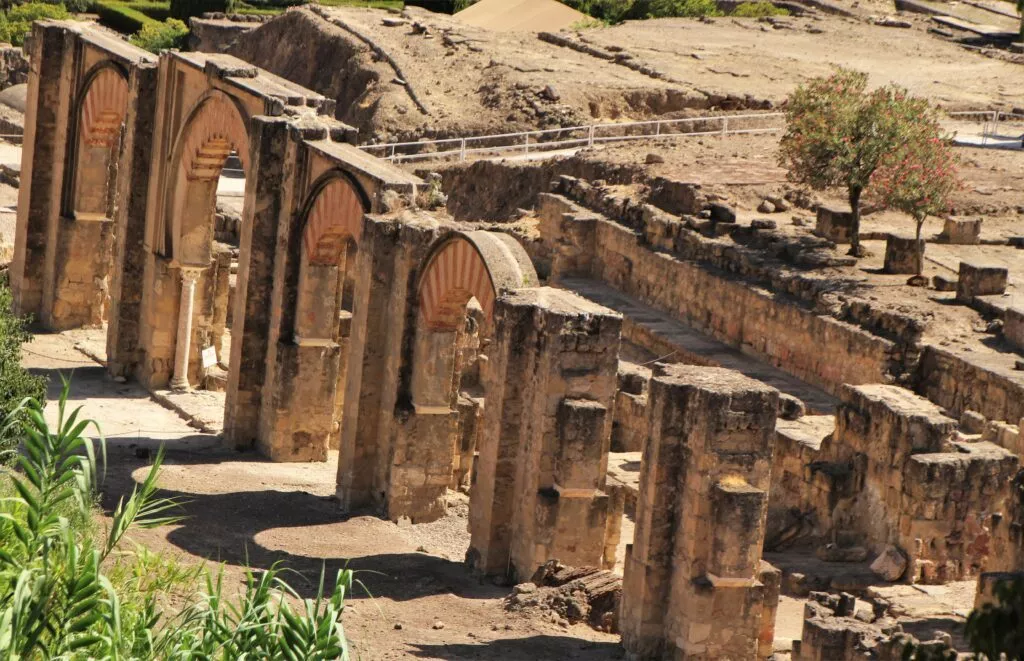
Its construction was intended to show the world the splendour and wealth of the Caliphate of Cordoba. Above all, it was an opportunity to signify the break and independence from the Caliphate of Baghdad.
This palatial city was built with huge quantities of marble, gold and precious stones. The ruins hint at a unique site and its past splendour.
In 1009, when the Caliphate of Cordoba began to break up, this palace city was destroyed. It was forgotten for almost 1,000 years, until it was discovered at the beginning of the 20th century!
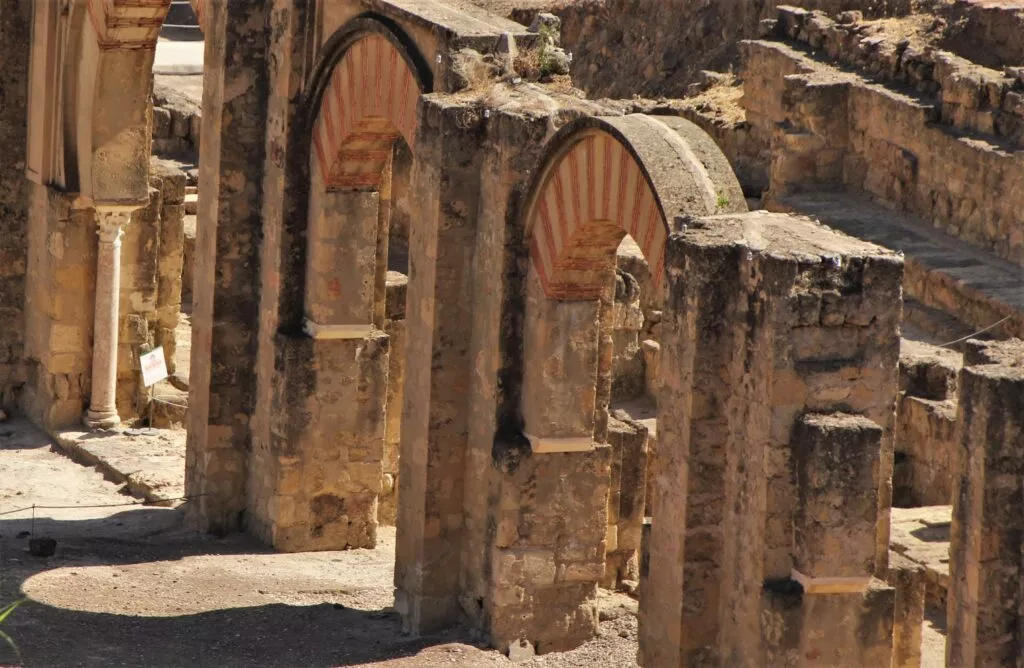
Here is a link to book a visit to Medina Azahara from Cordoba (with bus and guide).
At the bottom of this page, I mention the story of a man who was born in Madinat al-Zahra. He is Abulcasis. What he did, I think, is the best representation of what Qurtuba could have been to the world 1000 years ago…
Note: at the following link you can book several guided tours of Cordoba in English.
Some useful links
Easy and economical bookings
If you are in Andalucia as part of a tour with several major cities to visit, here are some links that may be of interest:
Seville
Seville, the capital of Andalucia, is a city full of treasures to discover and monuments to visit.
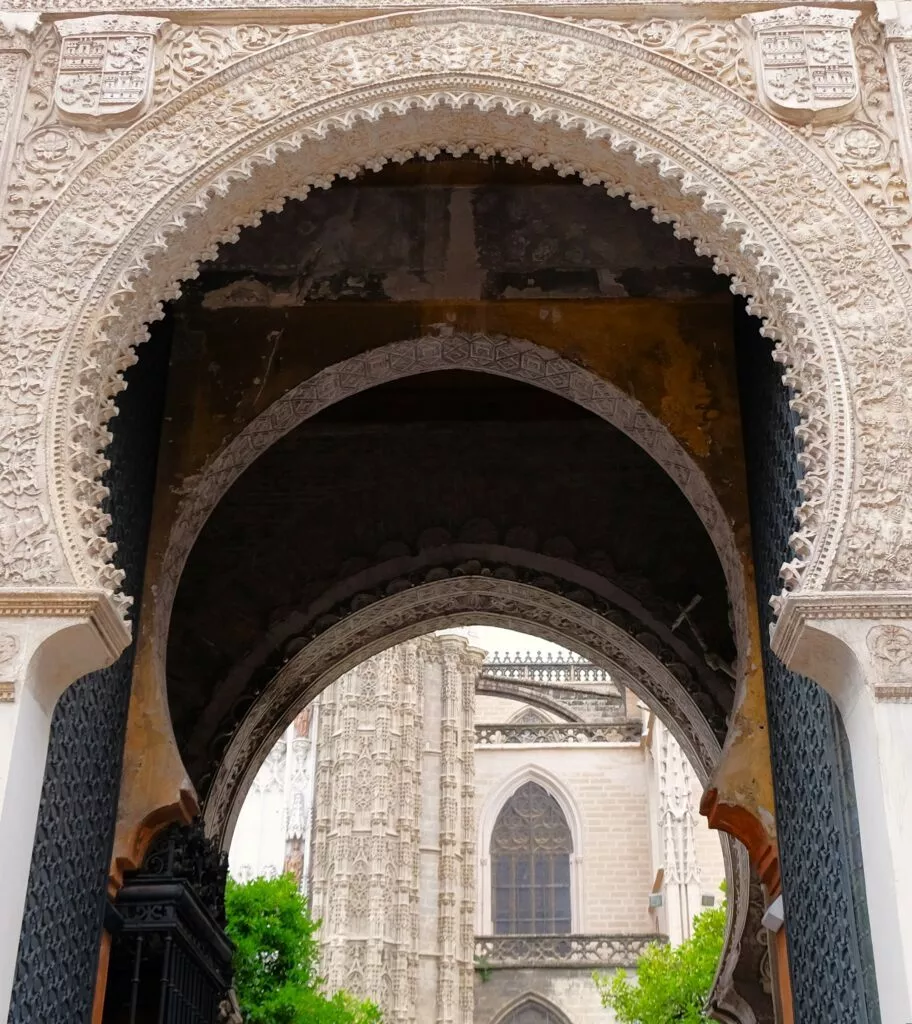
Here you will find everything you can see in Seville in 3 days. And for those who will stay longer you will also find information on secret Seville and the Santa Cruz and Triana districts.
Cadiz
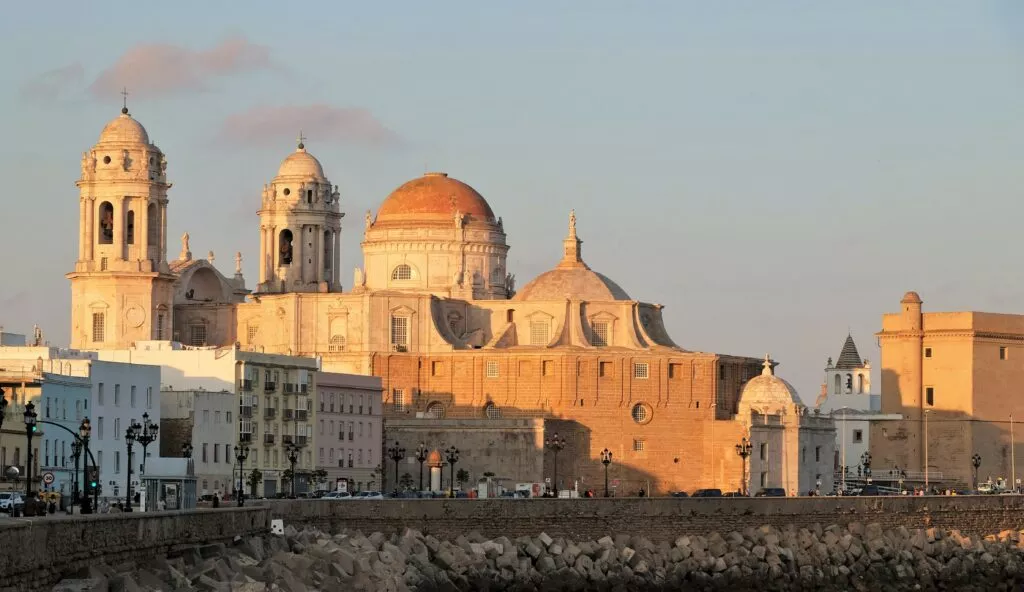
Visit Cadiz, a city with an incredible past and great beauty, on the Costa del la Luz.
Malaga
When you reach the Costa del Sol you will find in this link all must-sees in Malaga :
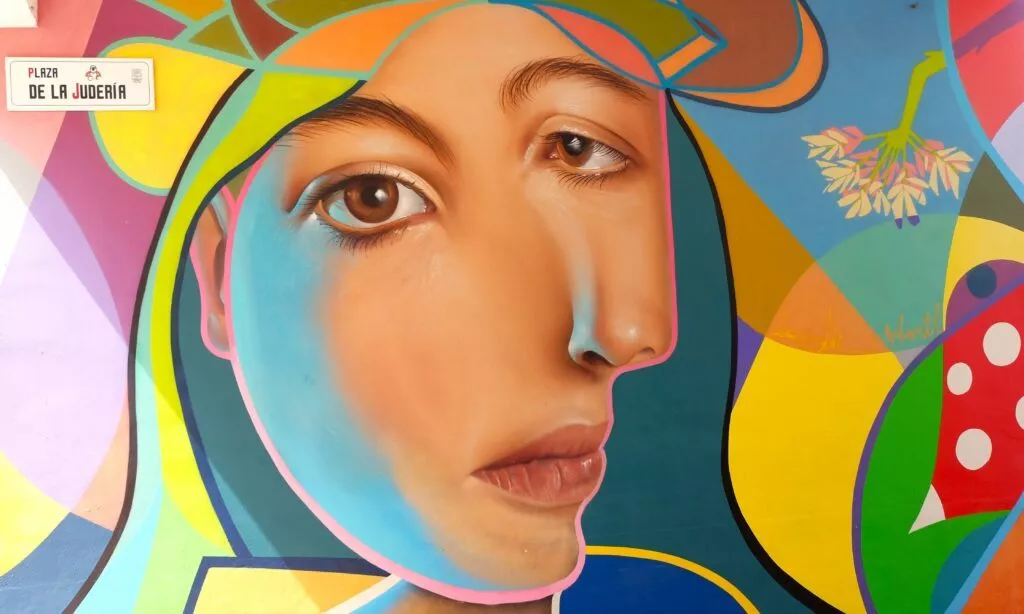
Granada
Discover what to see in Granada, and visit the Albaicin and Sacromonte districts:
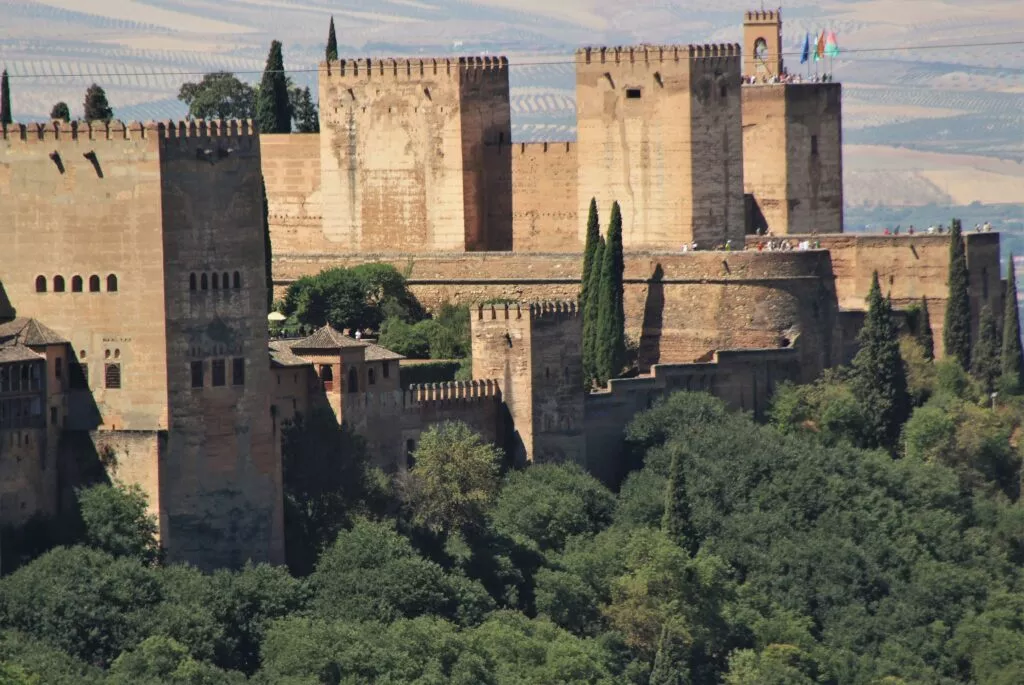
Discover more of Andalusia’s beautiful sites in the Andalusia blog pages.
Here is the link to receive our andaluciamia.com blog newsletter
And finally some museums to see in Cordoba
If you have more time to devote to visiting Cordoba, here is a list of museums that might interest you:
- The Archaeological Museum, with its fine collection of Roman artefacts
- The Museum of Fine Arts: here you will find a collection of modern Spanish art and another of Baroque art
This museum is relatively old, dating from 1862. It also has a beautiful trompe l’oeil façade from the patio.
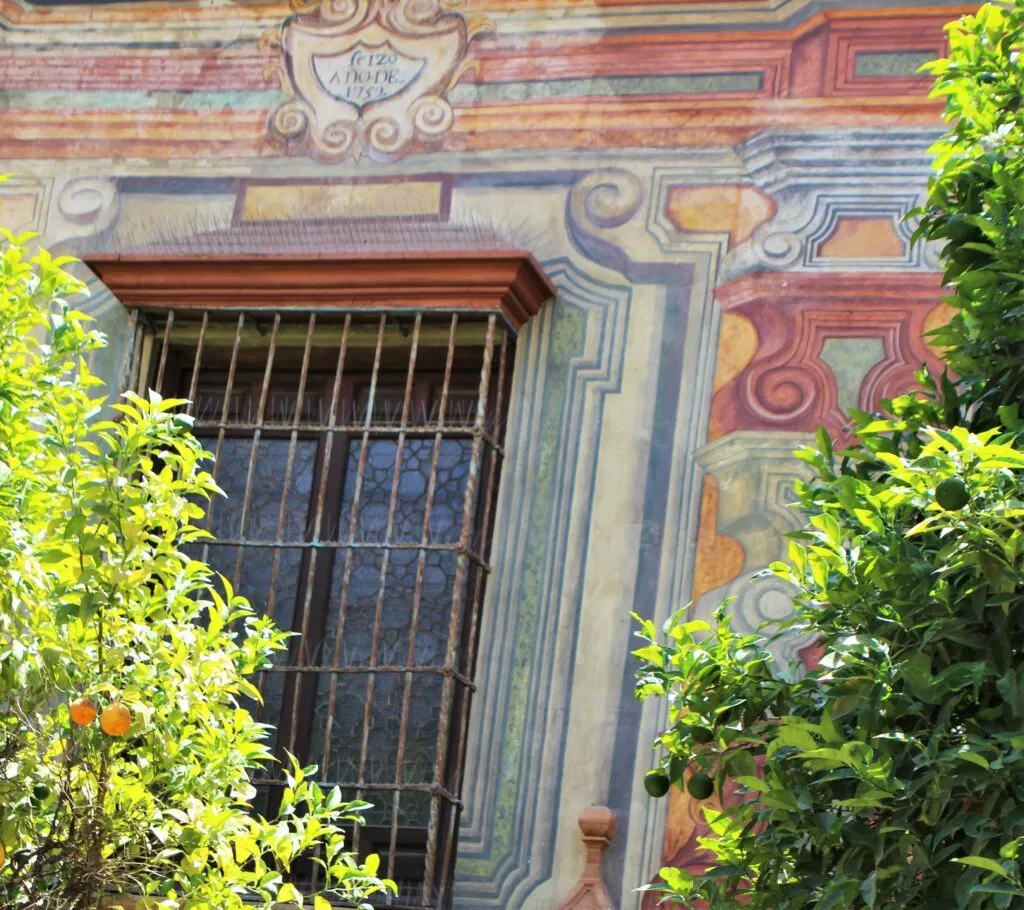
The building has a beautiful carved wooden ceiling. Inside you can see works by Zurbarán, Murillo, and other painters, as well as the Cordovan sculptor Mateo Inurria. At the entrance of the museum there is a beautiful patio full of orange trees.
- The museum and the ethnobotanical garden
- The Julio Romero de Torrez Museum, which houses a collection of the famous local painter, is next to the Fine Arts Museum.
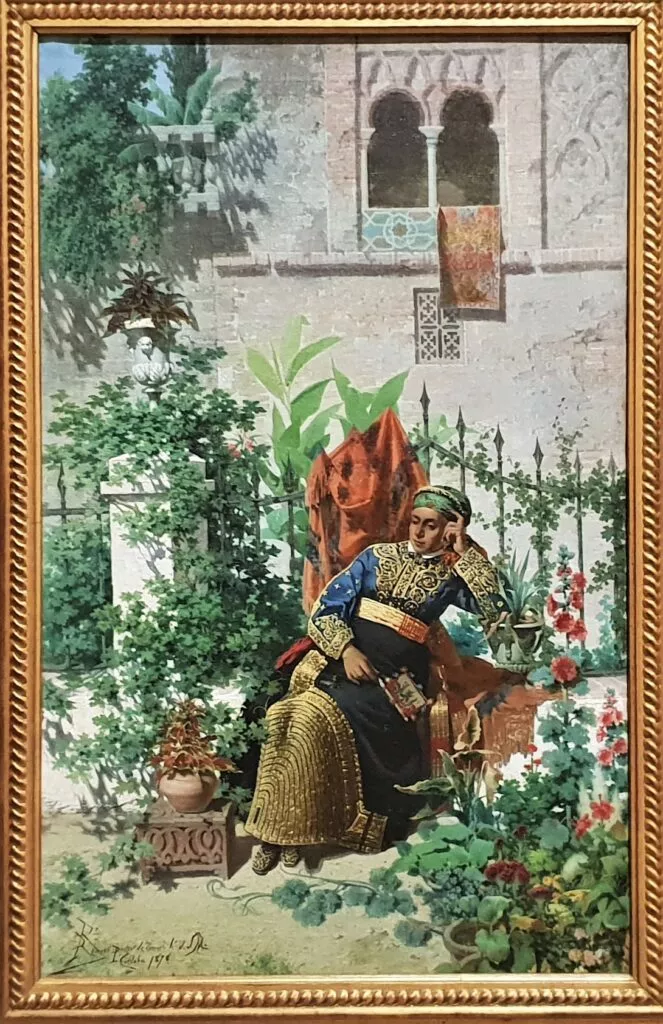
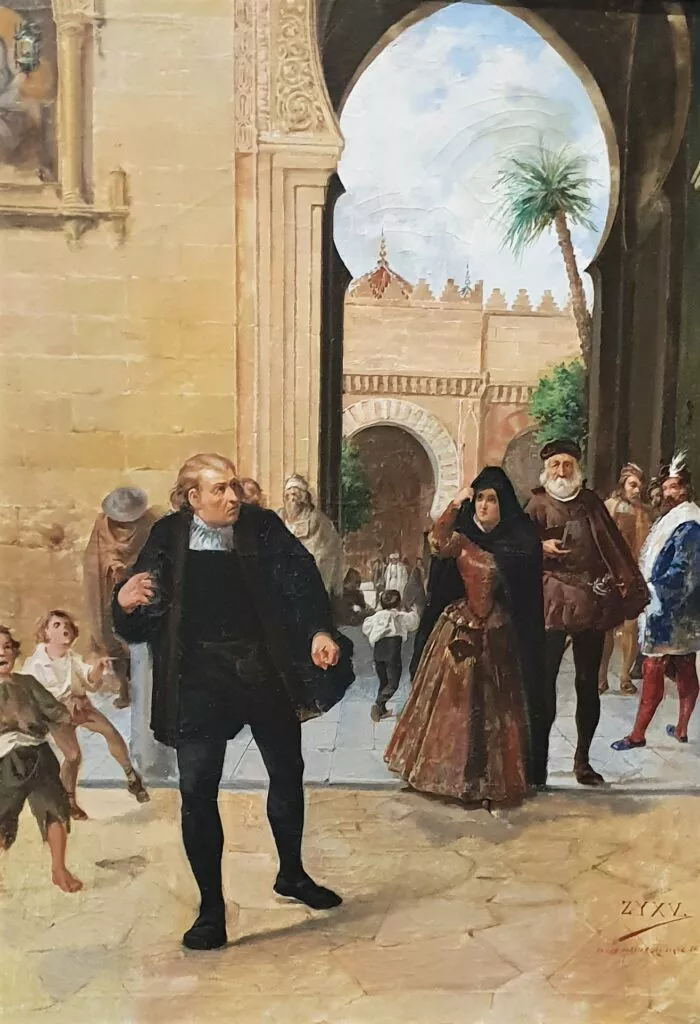
- The Inquisition Gallery: traces the history of the Inquisition and allows you to see the instruments of torture from this dark period…
The story of al-Zahrawi, a doctor of genius!
I’m getting away from the subject of visiting Cordoba, but its history is as great as Qurtuba was 10 centuries ago.
Abu Al-Qasim (al-Zahrawi) born in 940, is considered the greatest surgeon of the Middle Ages and the father of modern surgery.
It must be said that 3 billion people in 2022 do not have access to all the care that the Cordobans enjoyed 1000 years ago. It is absolutely staggering to the point of being hard to believe.
al-Zahrawi was the first to :
- cut out kidney stones,
- vaginally remove urinary stones
- conceive of the ligation of blood vessels
- re-implant a tooth.
- introduce the use of forceps for complicated deliveries
- inventing a surgical device for cataract operations
- using silk thread for sutures
- identify haemophilia,
- excise varicose veins.
- describe the Kocher method of treating dislocated shoulders
- describe the “Walcher” position in obstetrics
- describe ectopic pregnancy and its fatal consequences (in 963).
- incise the trachea, an operation he performed on one of his servants
- perform arterial ligations to stop haemorrhage
- suturing wounds from the inside so that they leave no visible traces
- identify abdominal pregnancy and the main cause of paralysis
- treat fistulas, hernia repairs, amputations and even trepanations,
- perform goitre surgery
- resection of limb aneurysms.
- Ensure haemostasis by digital compression and hot iron cauterisation.
- Perform patellectomies on the patella
- to use the classic Trendelenburg position, particularly in operations on the small pelvis
- making sophisticated instruments in stomatology for cleaning teeth and pulling out decayed teeth
- making dental prostheses from ox bones.
- operate on anomalies of the penis and scrotum
- using various preparations of opium, hashish, mandrake and henbane for general anaesthesia
All of his research and practices are written in “Al-Tasrif liman Aegiza an al-Ta’lif” – The Practice – which is a 1500 page encyclopaedia on the subject.
In his book, there is also mention of the 200 surgical instruments he designed (scalpels, scissors, probes, styli, catheters, saws, splints, otoscopes,…)
What allowed al-Zahrawi to be at the origin of so many medical innovations on his peers is that he practiced on dead people by practicing dissection. He was the first to do so, although dissection of the human body was never forbidden in the three Abrahamic religions.
Visiting Cordoba is also an invitation to stop in the narrow streets and see some great details
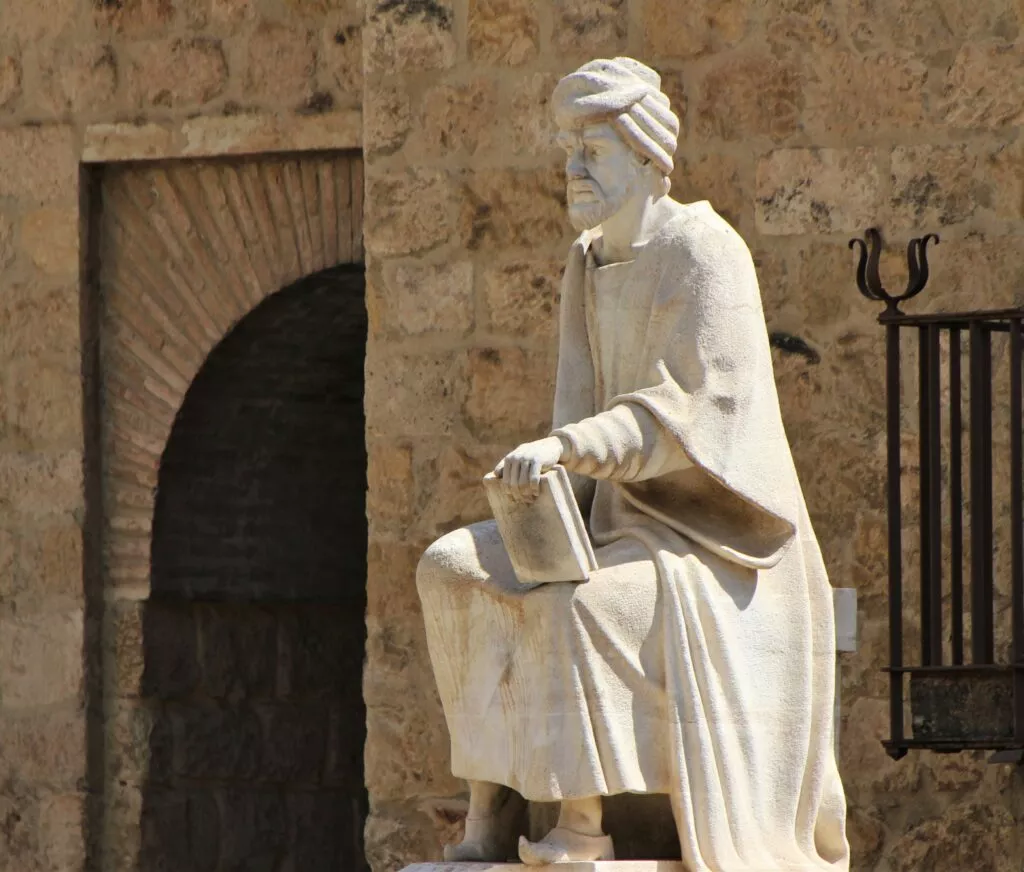
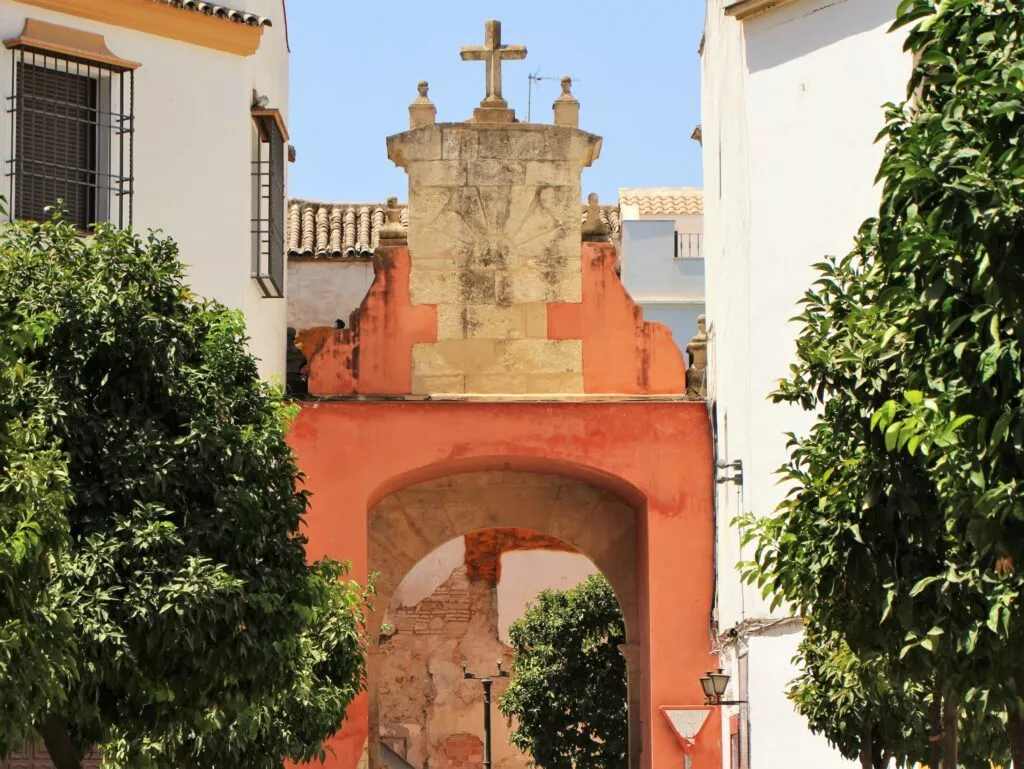
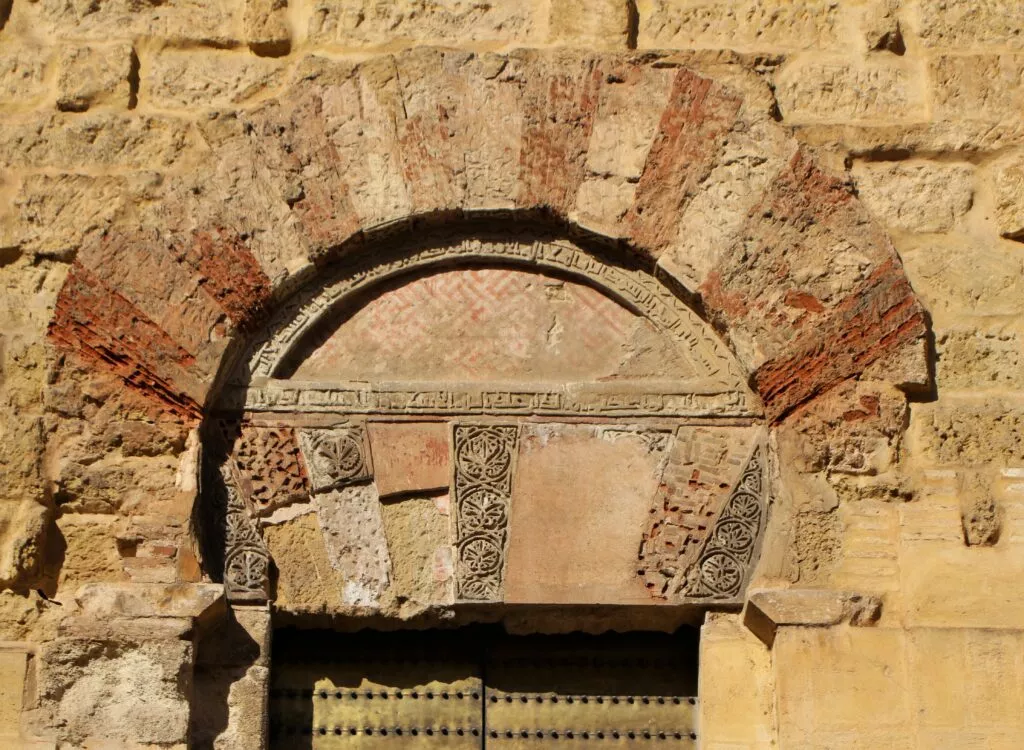
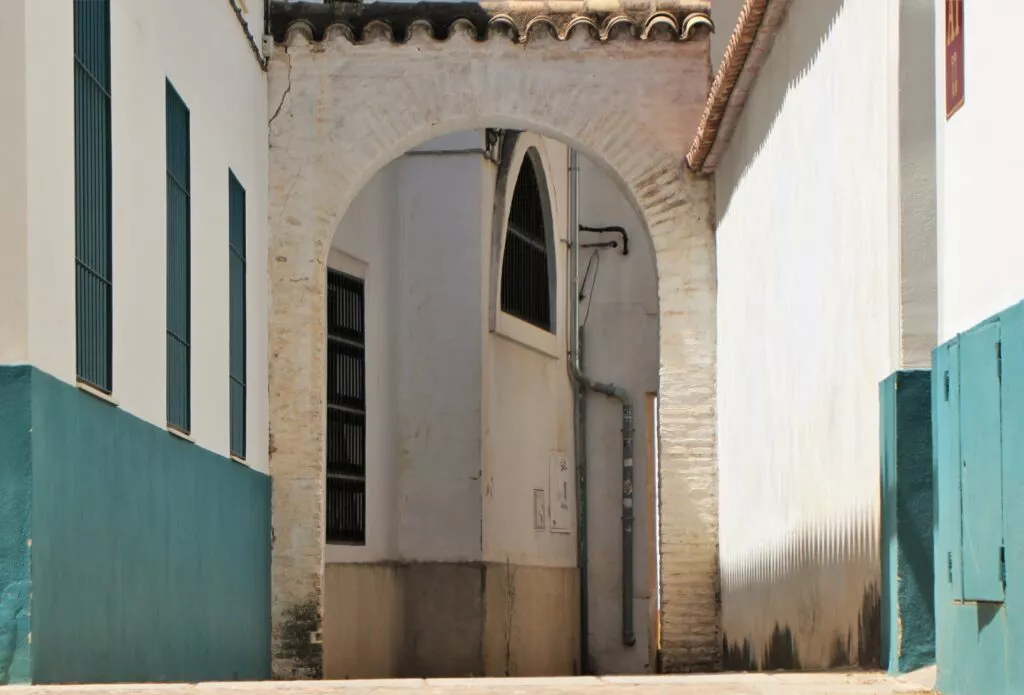
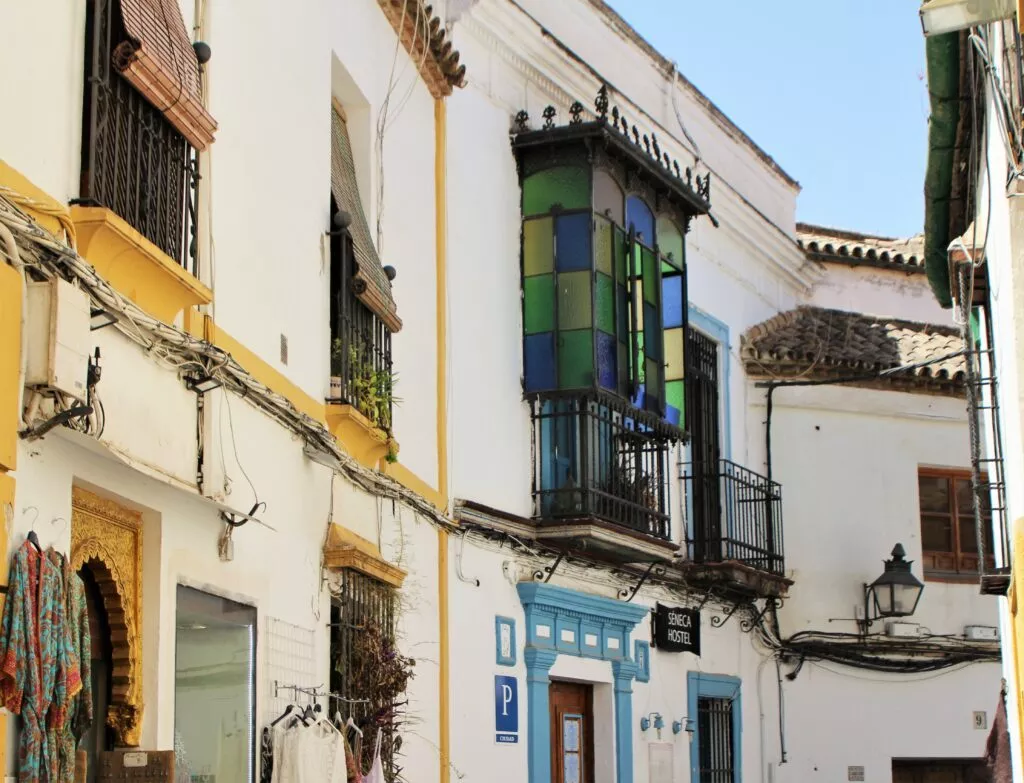
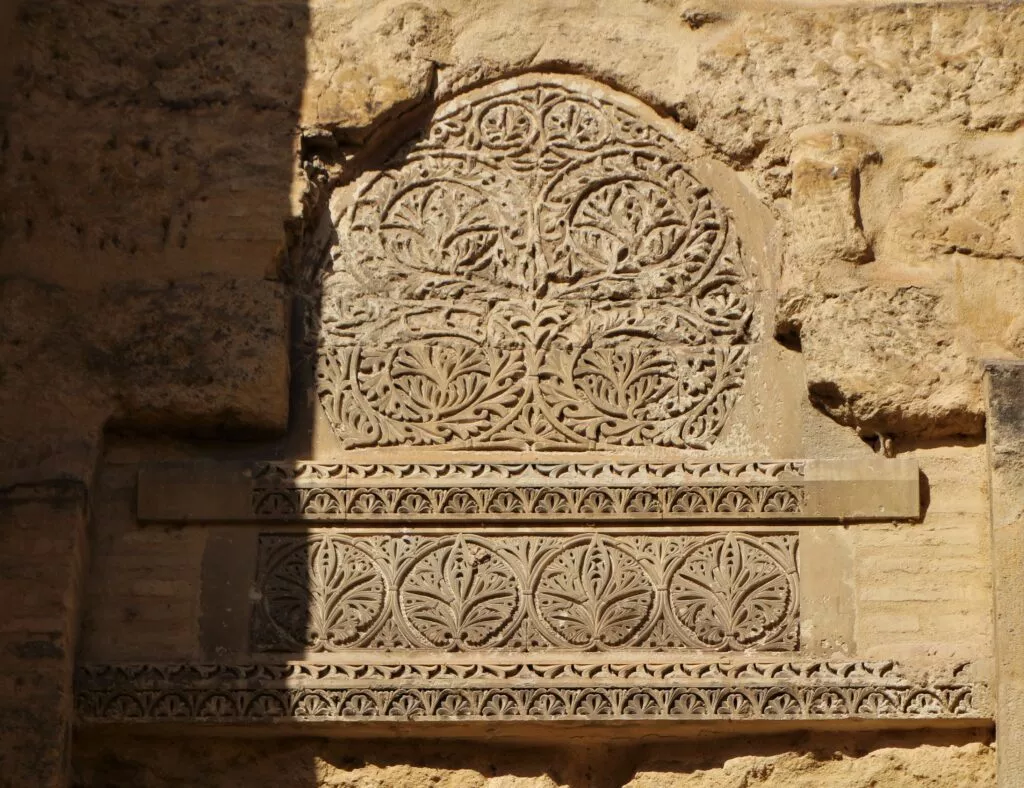
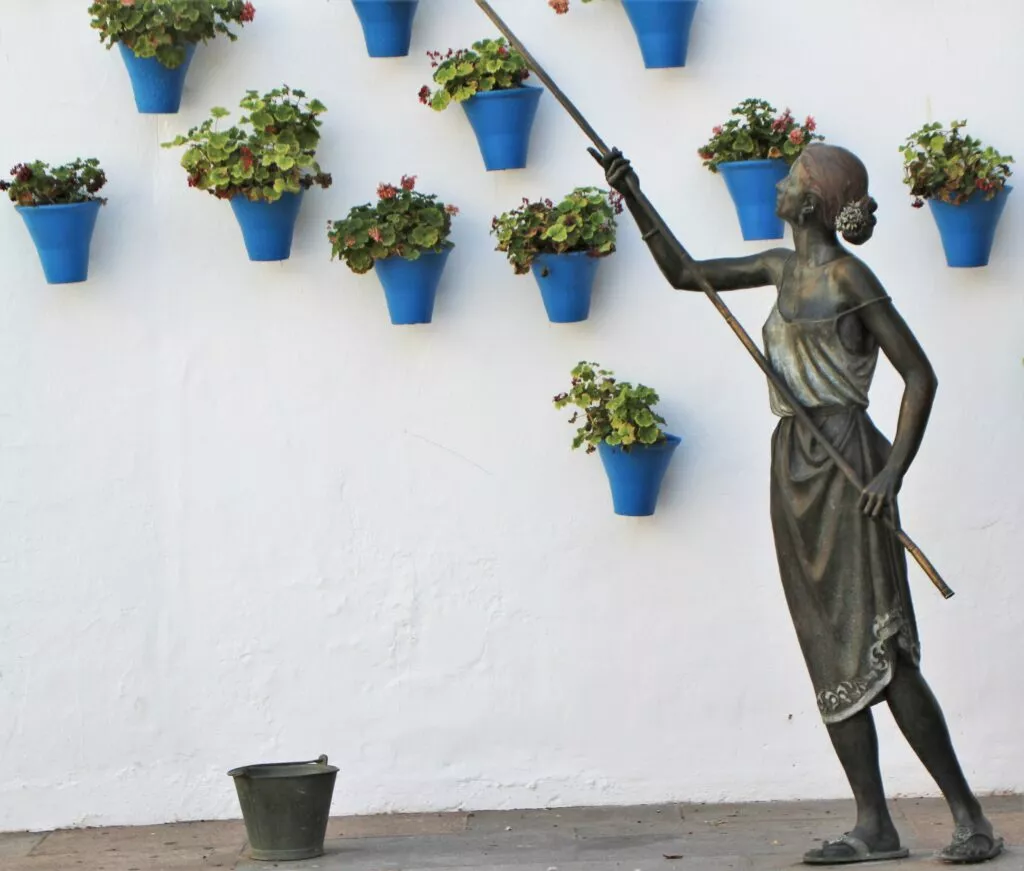
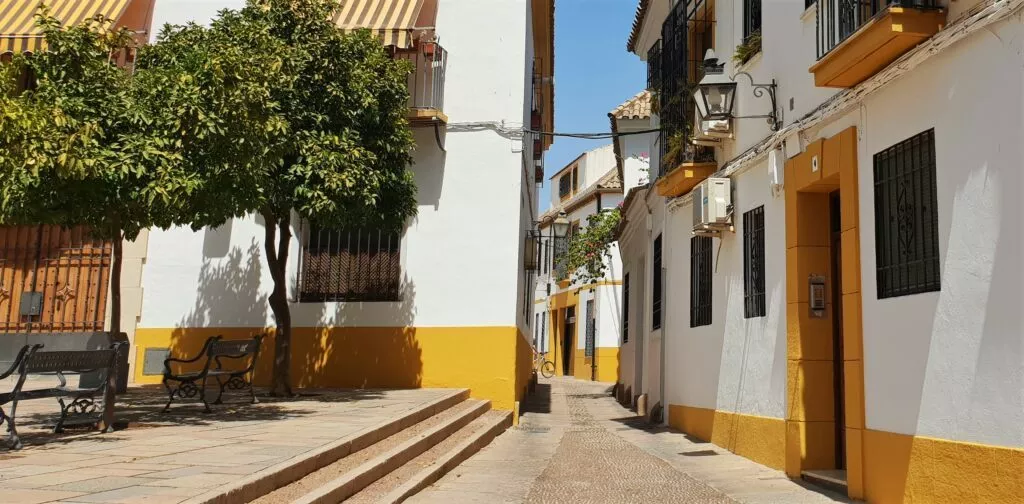
The latest articles on Andalucia
-
Interactive map of Andalucia with best places to see
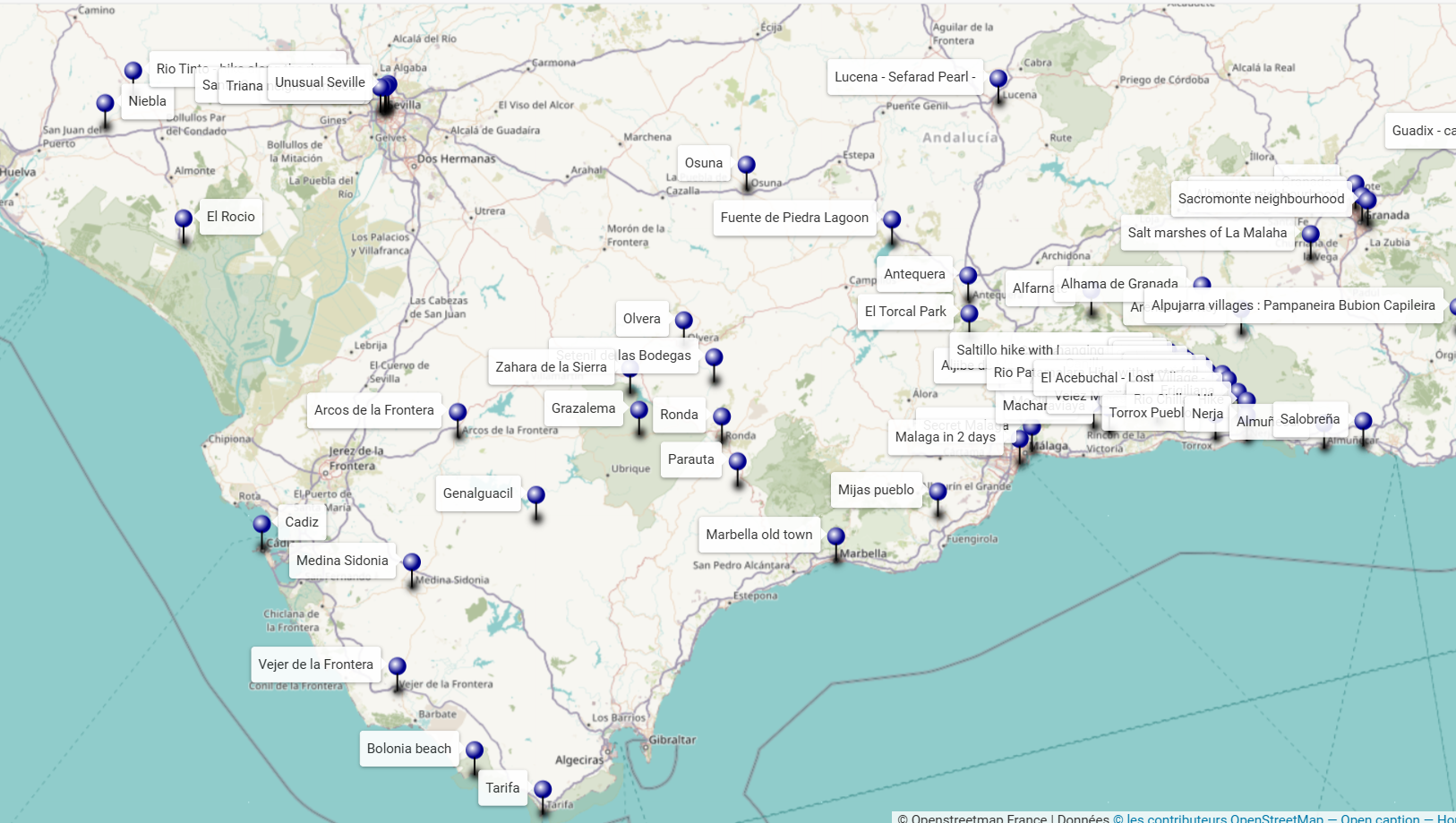
An interactive map of Andalucia to discover the sites to see around your holiday destination or to prepare a tour or road-trip.
-
Andalusia off the beaten track : 18 gems
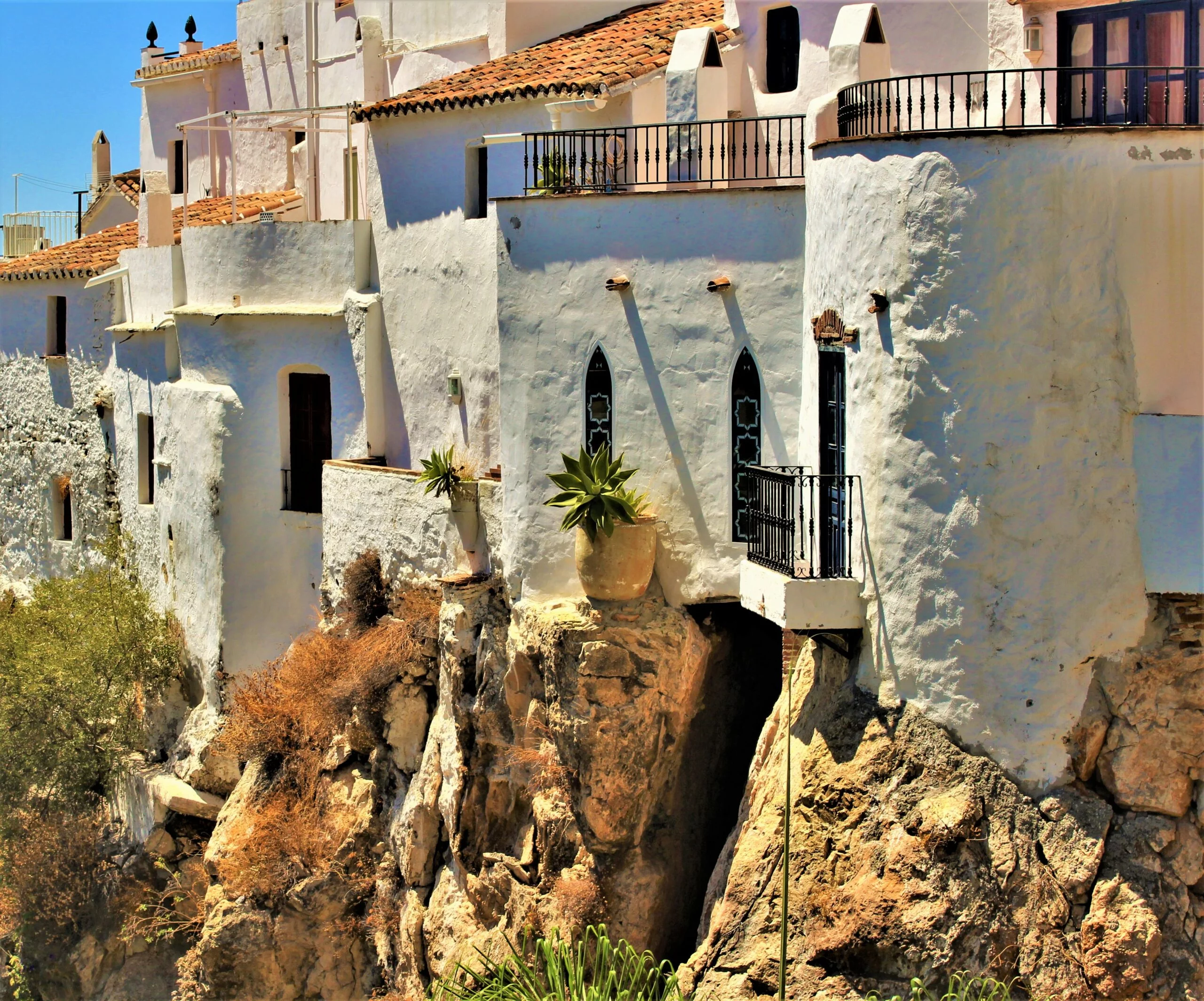
Let’s immediately set off to discover an Andalusia off the beaten track. There are many wonders to discover.
-
19 Most beautiful white villages in Andalusia
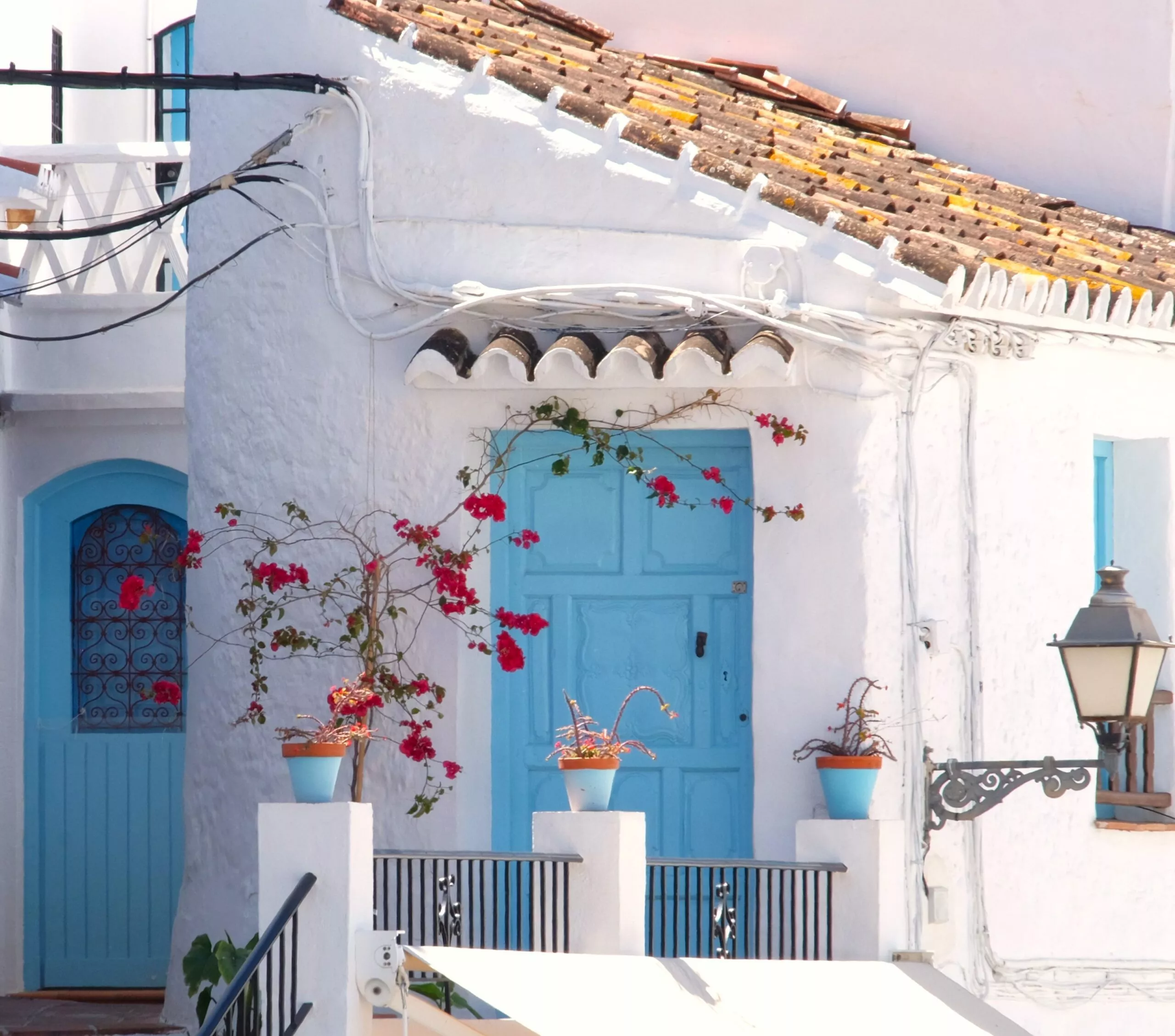
Discovering the most beautiful white villages of Andalusia. These villages are the only ones to be part of the Pueblos más bonitos de España.
-
Unusual Andalusia – 15 Very Surprising Places –
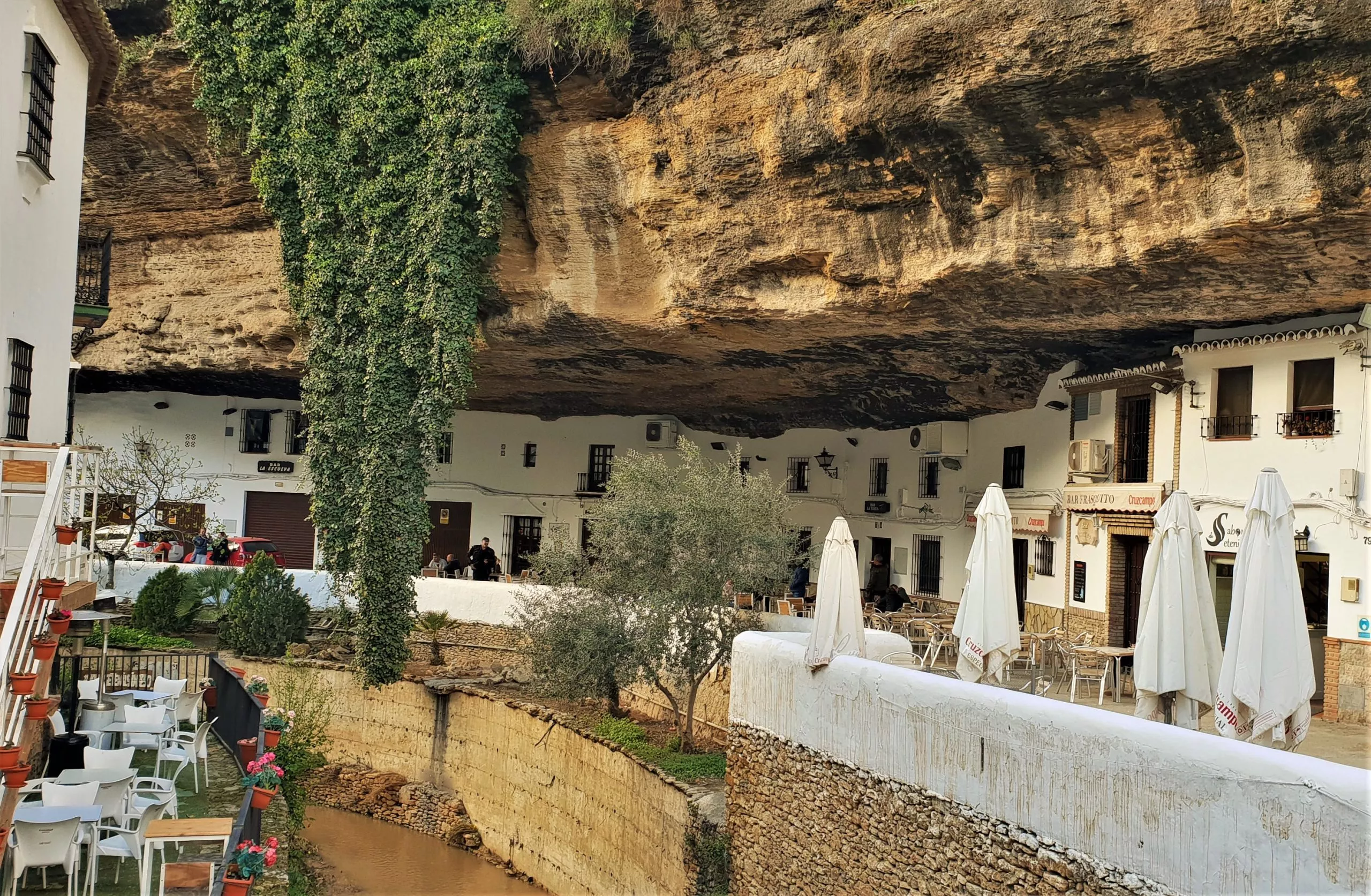
Unusual Andalusia: discover the most surprising and wonderful places in southern Spain.
